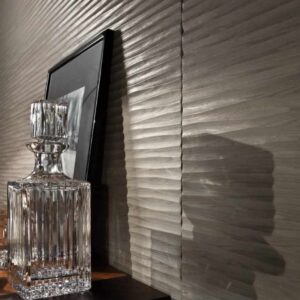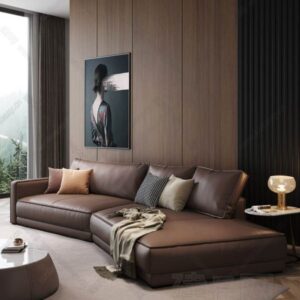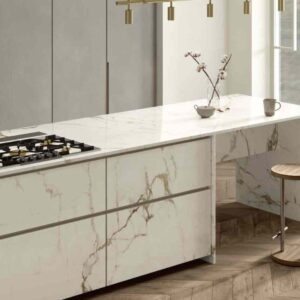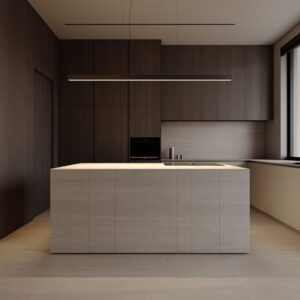Interior Design Trends 2025
Trends, strategies and opportunities for the interior design market of the future
An exclusive guide for architects who want to anticipate the future
and satisfy the desires of their most attentive and demanding clients.
Il Piccolo | Interior Architecture
Corso di Porta Nuova, 34
20121 Milan
Email: design@ilpiccolo.com
Telephone: +39 02 86 68 38
Telephone: +39 335 73 21 723
Index
- Introduction
- Sustainability and innovative materials: the new frontier of conscious luxury
- 3D printing: now an indispensable ally for customisation
- Sculptural furnishings: when design becomes contemporary art
- The sofa revolution: multifunctionality and organic shapes
- Designer armchairs: the outer shell as a style statement
- Contemporary chairs: between structure and upholstery
- Today’s kitchens: between technology and a return to basics
- Outdoor living: the garden as the new frontier of luxury
- Outdoor kitchens: the culinary arts under the stars
- Conclusion: the future lies in craftsmanship with an eye to innovation
- Il Piccolo: the ideal partner for your interior design studio.
Introduction
Trends do not arise out of nowhere. They emerge from the convergence of social needs, technological developments and cultural aspirations that we, as professionals, must be able to grasp before they become mainstream.
2025 looks set to be a landmark year for interior design. We are not simply witnessing a change in aesthetic trends, but a profound revolution in the way we conceive, design and create living spaces. Customers, especially sophisticated ones, are looking for something more than beauty and functionality. They are looking for meaning, sustainability and uniqueness. Above all, they want that perfect synthesis of innovation and craftsmanship that only a few ateliers can offer.
This guide is the result of direct observation of the market and the projects we are developing for international clients. It is also based on an analysis of the most frequent requests we receive and constant dialogue with the best European architects. Each trend described here is not theory, but everyday practice in our workshops, where every piece is conceived as a functional work of art. As a result, the information and advice you will find in the following pages will allow you to stay ahead of the competition. This will enable you to meet your customers’ current expectations and translate the most innovative insights into projects that are appreciated for their contemporary appeal.
As architects, you know better than anyone that your success depends on your ability to anticipate your clients’ desires and turn them into spaces that evoke emotions. This guide will provide you with the tools to do just that, drawing on the consolidated experience of those who, for over half a century, have lived through and interpreted the evolution of Italian and international design. Il Piccolo has experienced the various transformations of the market from within, accompanying generations of professionals in the realisation of their most ambitious projects.
It is precisely this historical perspective, combined with a continuous pursuit of excellence, that makes these insights so valuable for professional practice.
Enjoy reading and keep up the good work.
Andrea Galimberti
Il Piccolo
Sustainability and innovative materials: the new frontier of conscious luxury
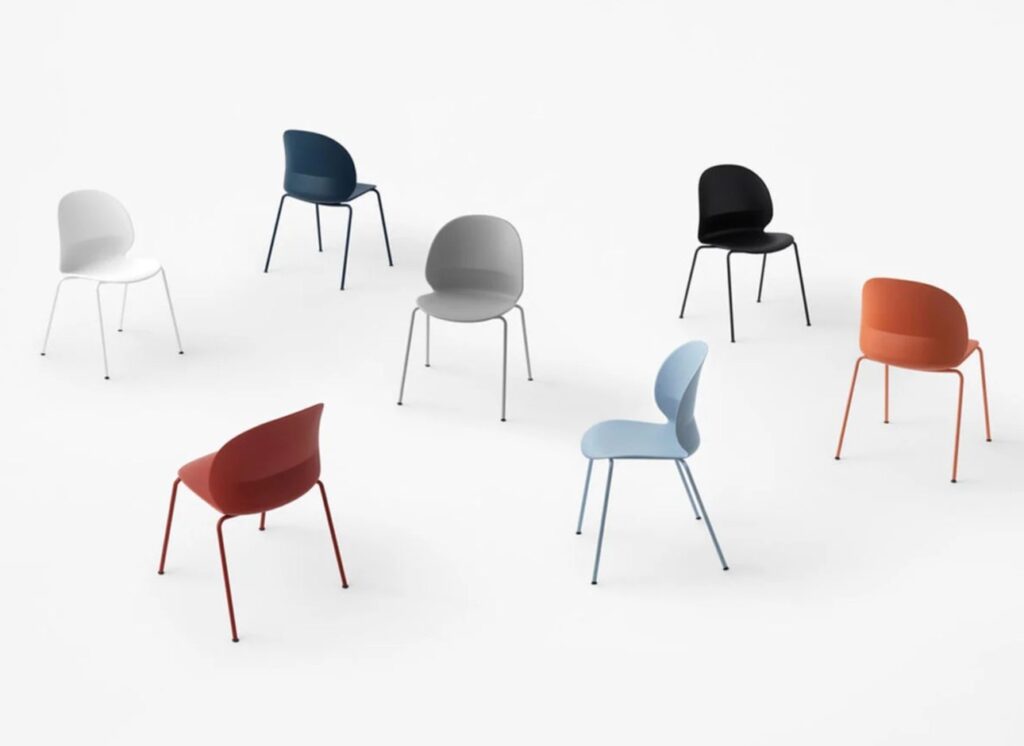
Sustainability in luxury design is no longer optional. It has become the distinguishing factor that separates true professionals from mere interior designers. The most sophisticated customers – international managers, entrepreneurs, cultural figures – no longer accept compromises between beauty and environmental ethics.
Laboratories are experimenting with materials that were unthinkable just a few years ago. Recycled PET, for example, has become a key player not only in furniture but also in the production of high-quality carpets. In the latter case, the technical challenge was enormous: maintaining the softness, durability and refined aesthetics that customers expect, while creating yarns derived from recycled plastic bottles.
Another trend that was unthinkable a few years ago? Recycled polypropylene is revolutionising the production of many chairs. Projects such as the “Bell Chair” by Konstantin Grcic for Magis have shown that it is possible to achieve clean shapes and exceptional structural strength from waste materials. Innovative techniques have been developed to process this type of compound, achieving finishes that rival those of the finest virgin plastics.
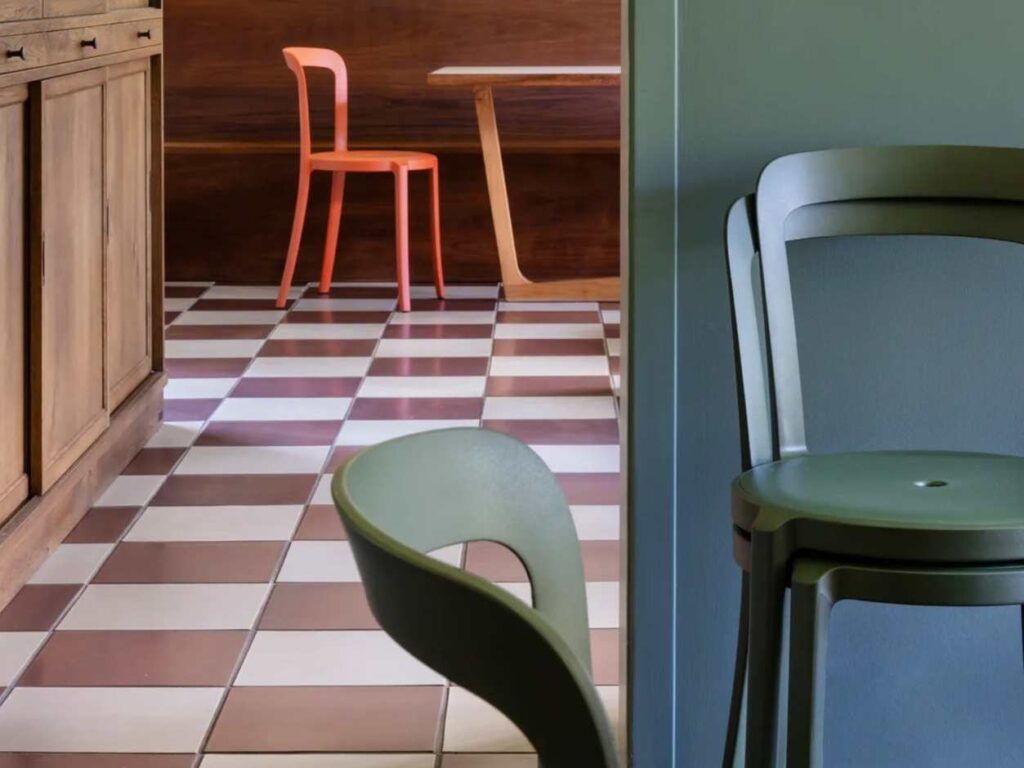

Another clear example of this evolution is Nendo’s “N02 Recycle” for Fritz Hansen. This is a revolutionary chair that literally transforms our everyday waste into design excellence. Food packaging, plastic straws, bottle caps and, more generally, everything that normally ends up in the rubbish bin: everything is ground into pellets and reused to create a chair with a very pure design. The technical genius lies in the homogenisation process: each piece of waste retains its original properties but contributes to the final characteristics of the product.
For its part, the “Smart Ocean” chair by Niels Diffrient for Humanscale represents the frontier of recovered ocean materials. Made entirely from nylon fishing nets abandoned in the oceans, it transforms a devastating environmental problem into an elegant design solution. The properties of nylon, hardened by sea salt and exposure to the elements, give the chair superior strength characteristics compared to virgin nylon. Each recovered net has a different history, which is reflected in the subtle colour variations of the finished chair.
We would also like to mention the “Forite Tile Collection”, which is perhaps the most sophisticated example of upcycling in the flooring industry. This tile collection transforms glass from electronic waste – computer screens, televisions, discarded smartphones – into surfaces of extraordinary beauty. The controlled melting process creates unpredictable colour effects: each screen has a different chemical composition, which reacts to the temperature to produce unique shades.
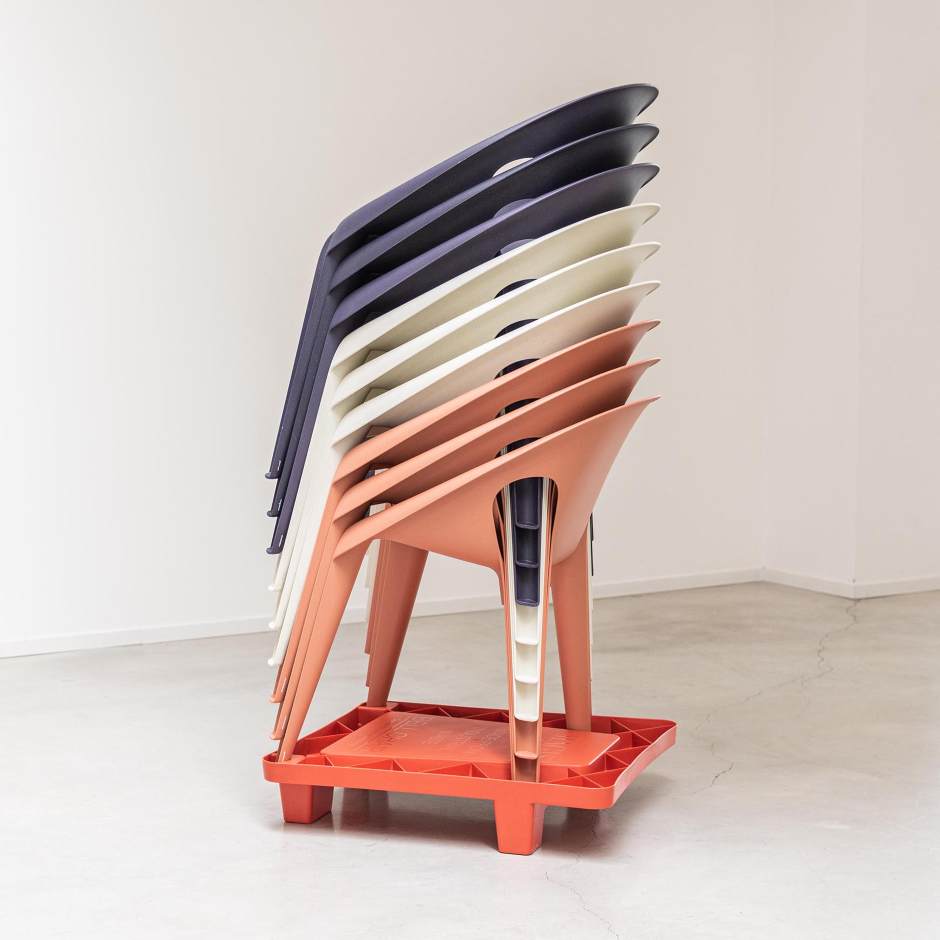
The examples we have given are undoubtedly bold, if not striking. However, the real revolution lies in the design approach. It is no longer a question of replacing traditional materials with eco-friendly alternatives, but of completely rethinking the creative process, starting from sustainability as the guiding principle. This effort requires extreme craftsmanship and in-depth knowledge of the chemical and physical properties of each of the new materials.
3D printing: now an indispensable ally for customisation
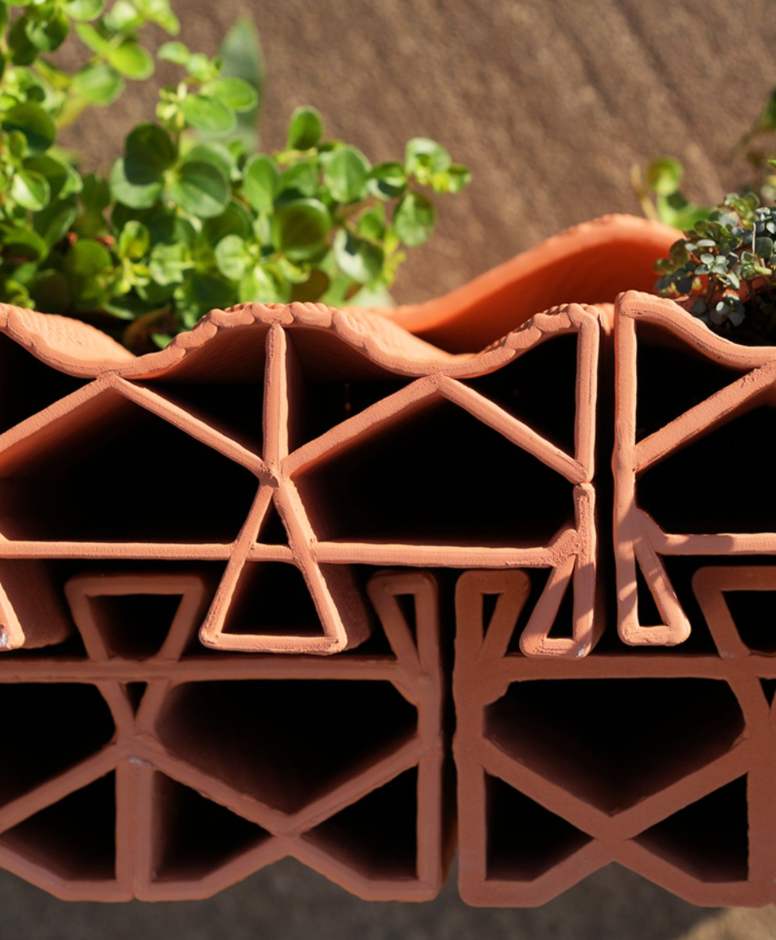
3D printing is revolutionising the approach to design and production. In fact, we are no longer talking about an experimental technology, but a production tool that is now widely used and allows us to create shapes that would be impossible with traditional techniques. In addition, it allows us to customise each piece according to the specific needs of the individual customer.
In craft workshops, industrial 3D printers are used to work with innovative materials: carbon fibre-reinforced polymers, resins and technical ceramics, and metal alloys specific to each application. Each material requires specific printing parameters and customised post-processing.
Thanks to additive printing, rapid prototyping has greatly accelerated development times. Today, shapes, proportions and ergonomics can be tested in a matter of days rather than weeks. This helps to involve the customer more directly in the creative process, showing physical versions of the proposals and modifying them in real time.
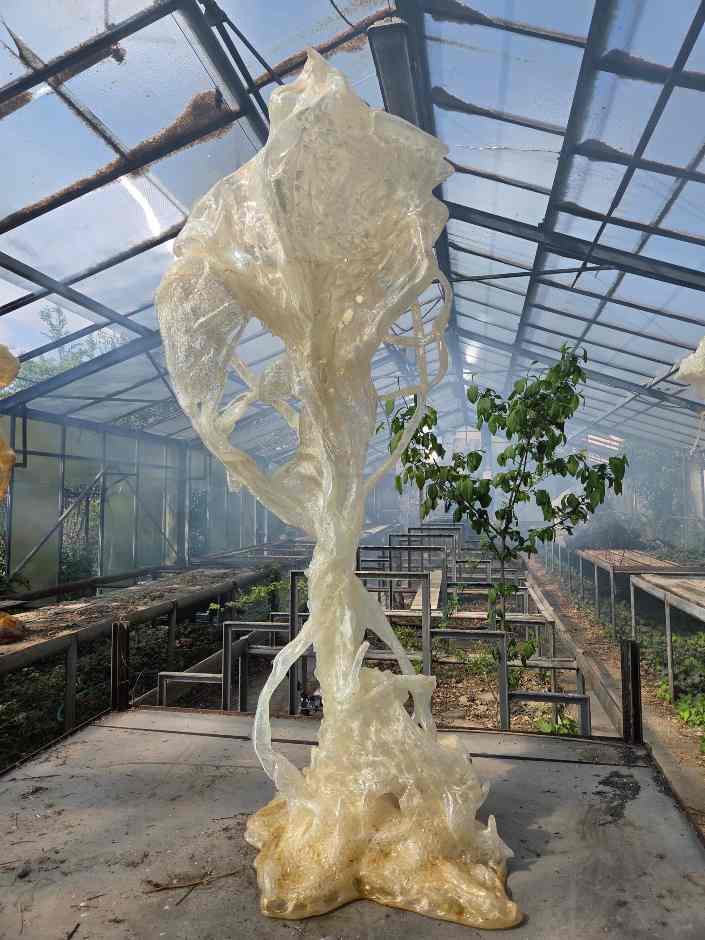
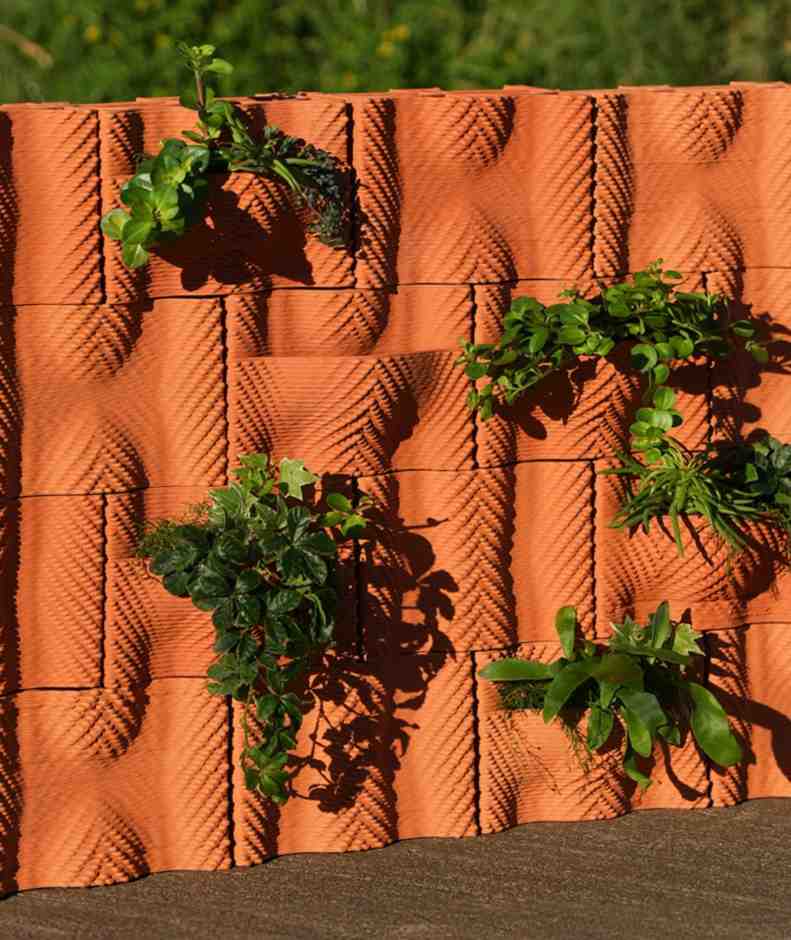
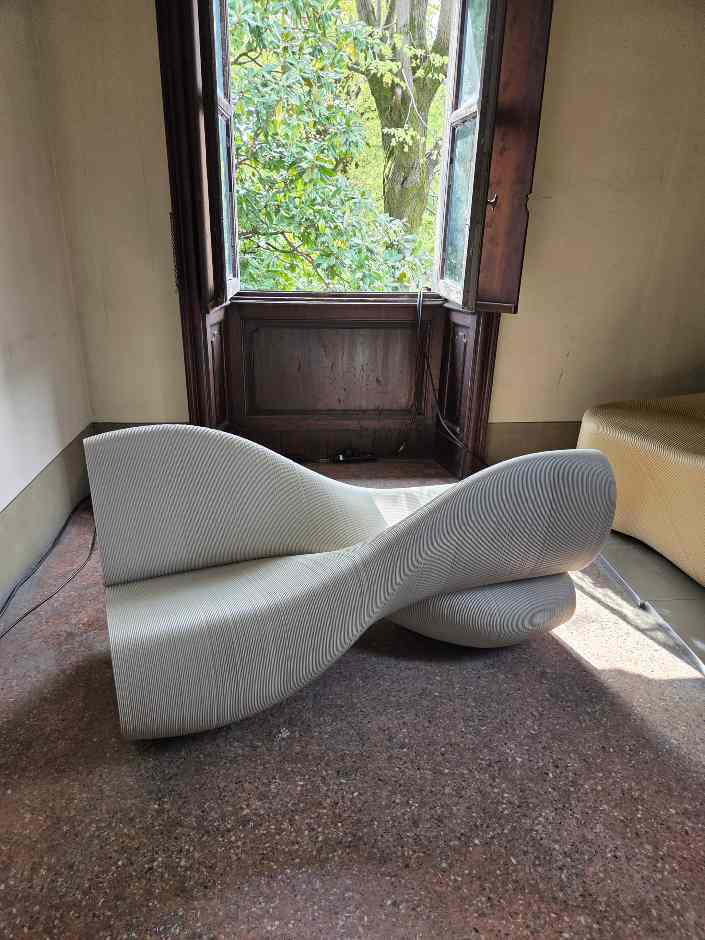
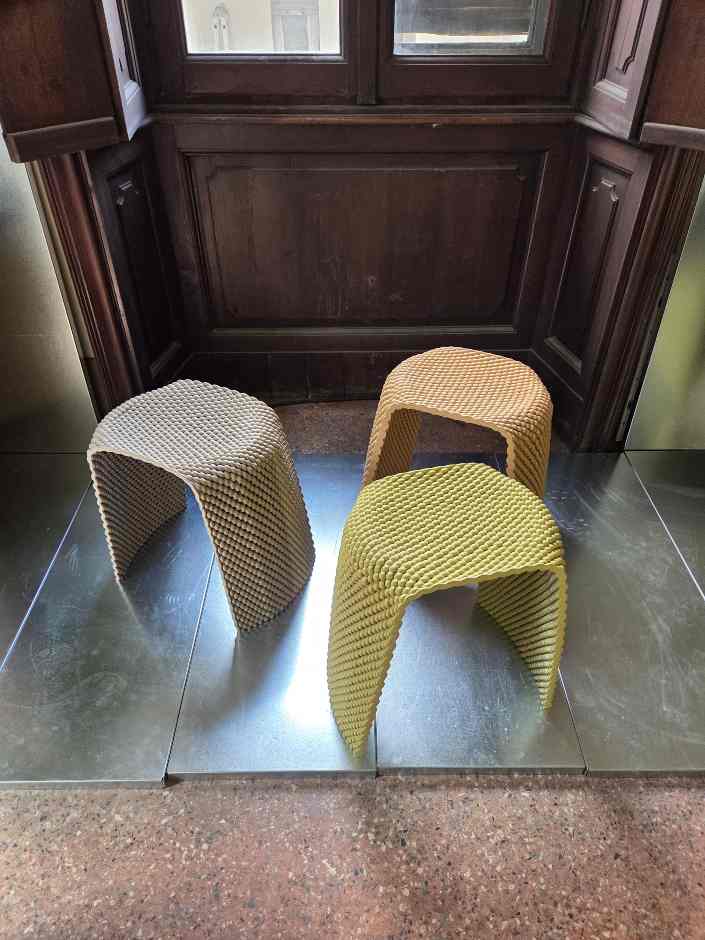
Customised mass production is the future of accessible luxury. Each piece can be adapted to the customer’s specific anthropometric measurements, the exact dimensions of the destination space and individual aesthetic preferences. All while maintaining sustainable production costs.
In some ways, it’s almost a miracle: complex shapes that would require disproportionate processing times can be printed in a matter of hours. But beware: technology does not replace traditional craftsmanship! Rather, it frees it from technical constraints, allowing master craftsmen to focus on the details of finishing and assembly.
Furthermore, the integration of smart functions during printing opens up endless possibilities. Temperature sensors, LED lighting systems, heating elements and touch interfaces can be integrated directly into the structure during the printing process. This eliminates the need for subsequent assembly.
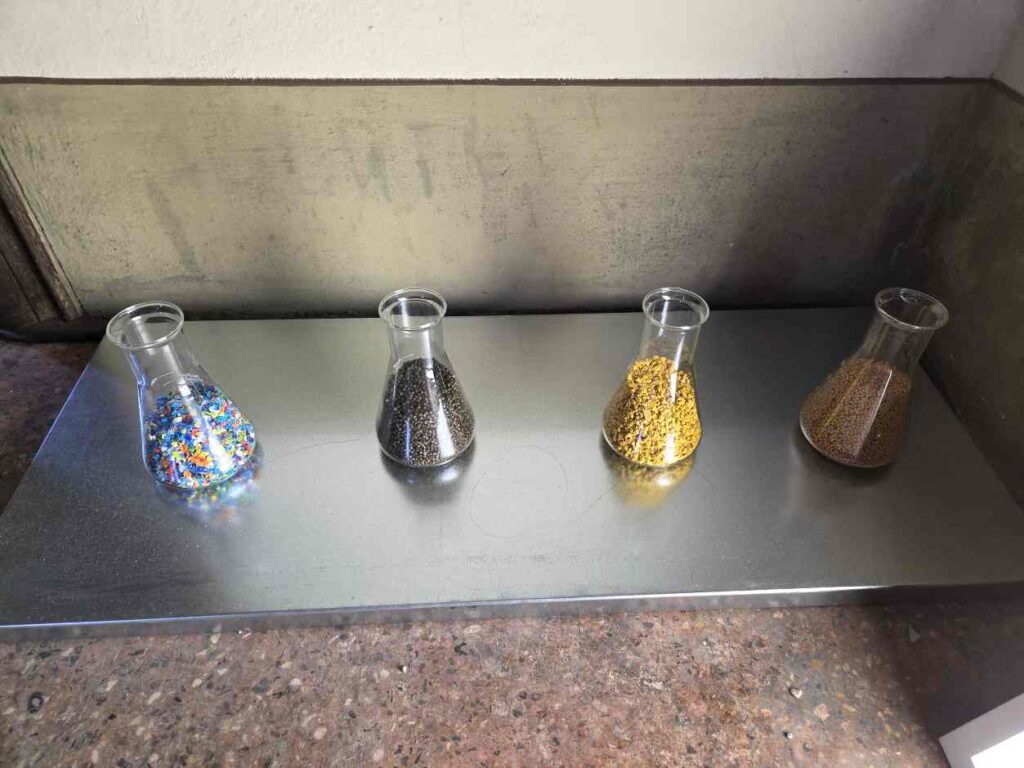
The sustainability of 3D printing stems from on-demand production, which eliminates waste and inventory. The sustainability of 3D printing also stems from the use of recyclable materials and the ability to repair individual components instead of replacing entire pieces of furniture. This opens the door to a myriad of applications, ranging from mini houses to a wide range of accessories and outdoor furniture. From vases to roof tiles to chairs: the only limit is your imagination.
Sculptural furnishings: when design becomes contemporary art
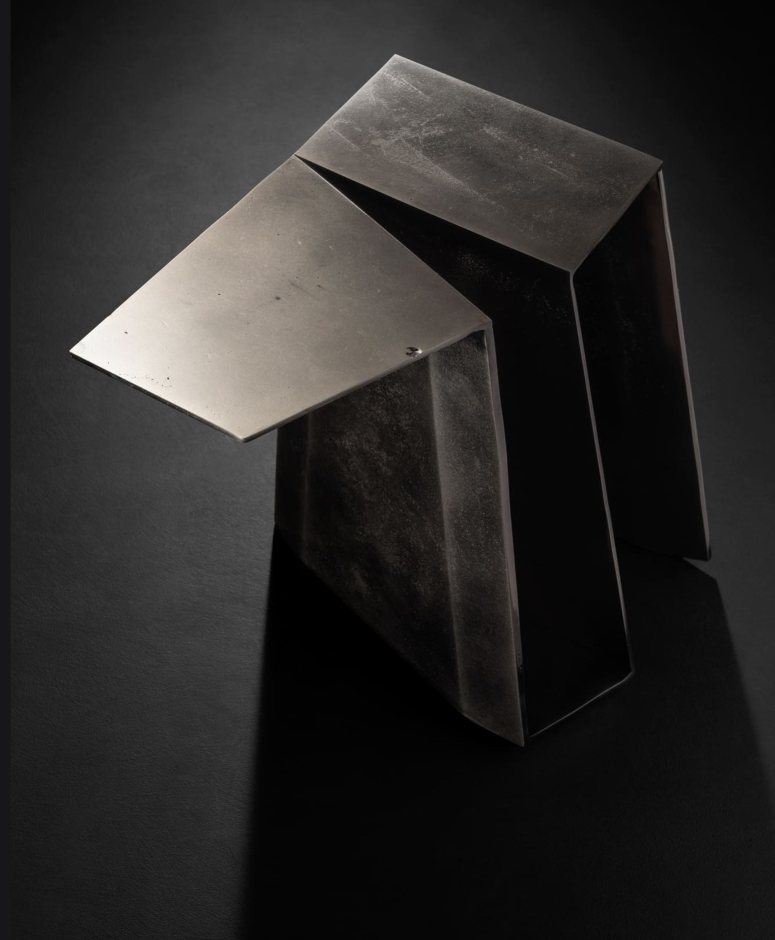
In many ways, the boundary between furniture and sculpture is gradually disappearing. Customers no longer simply buy furniture or accessories, but functional works of art that become the emotional focal point of their living spaces. This trend reflects a profound cultural change: the home as a personal gallery, where every element must have its own expressive power.
In the design process, each piece begins as a sculpture that must then find its function. The starting point is the emotion you want to evoke, the artistic gesture you want to crystallise in the material, and only then do you think about its practical use. This approach is undoubtedly disruptive, because it overturns the traditional method of functionalist design.
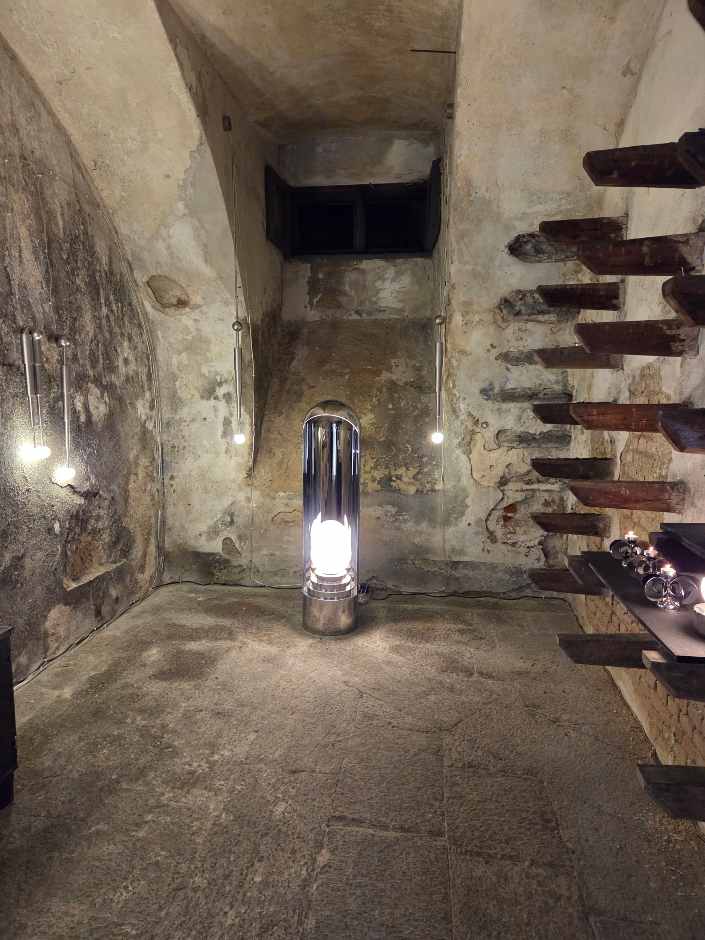
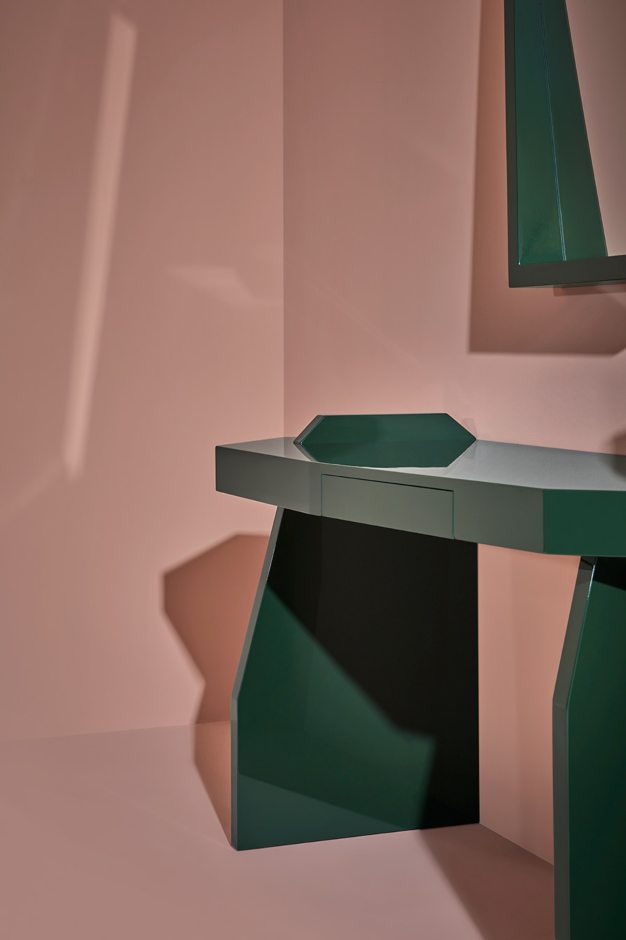
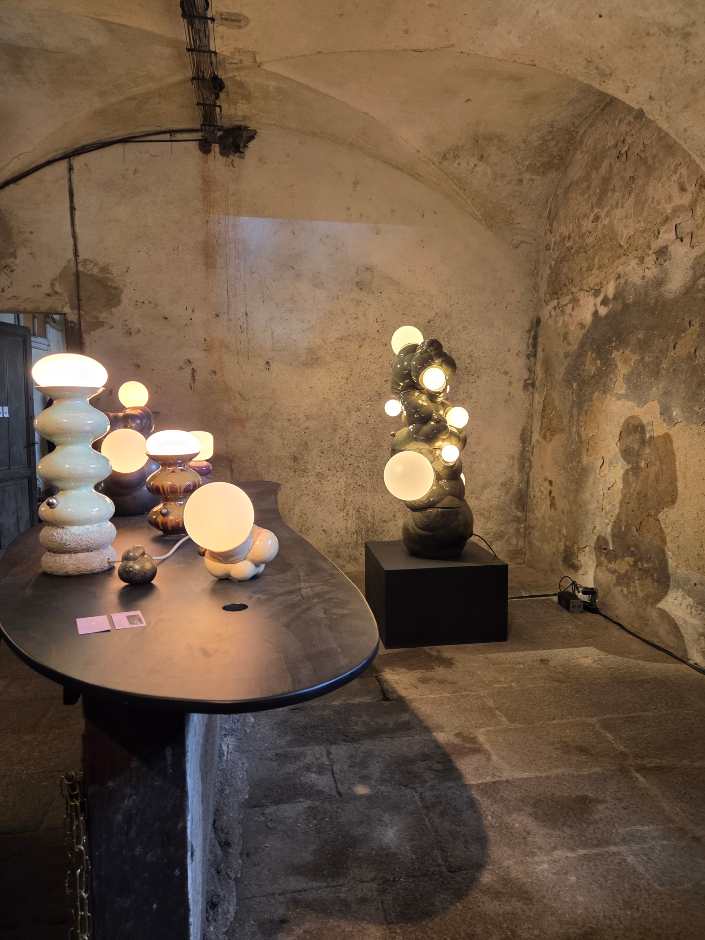

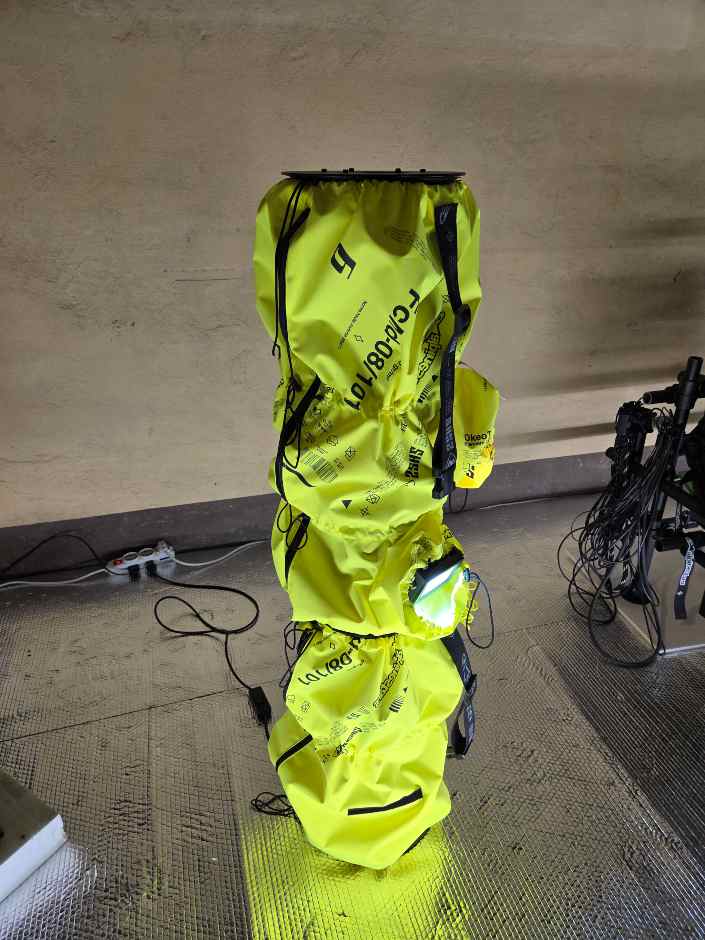
The techniques used to craft these sculptural furnishings require skills that go beyond normal carpentry or metalworking. The craftsmen must be almost like sculptors. They must be able to shape wood and metal as if they were clay, while maintaining the engineering precision that preserves functionality and durability.
This new expressive language manifests itself through elements that challenge traditional conventions. We refer, for example, to bronze castings, marble totems and brutalist geometries. All-metal furnishings take on a monumental presence in contemporary spaces. On the other hand, those made entirely of glass play with transparency and light refractions, which dissolve the physical weight of the object. In short, every material is pushed beyond its traditional limits. This allows us to explore new expressive possibilities that were unthinkable just a few years ago.
Another example of this new paradigm? A sculpture-table we saw in the home of a Milanese collector. It was a four-metre slab of Canaletto walnut supported by a bronze structure that seemed to float in the air. The technical complexity was hidden by the purity of the form, but it required precise structural calculations and innovative assembly techniques.
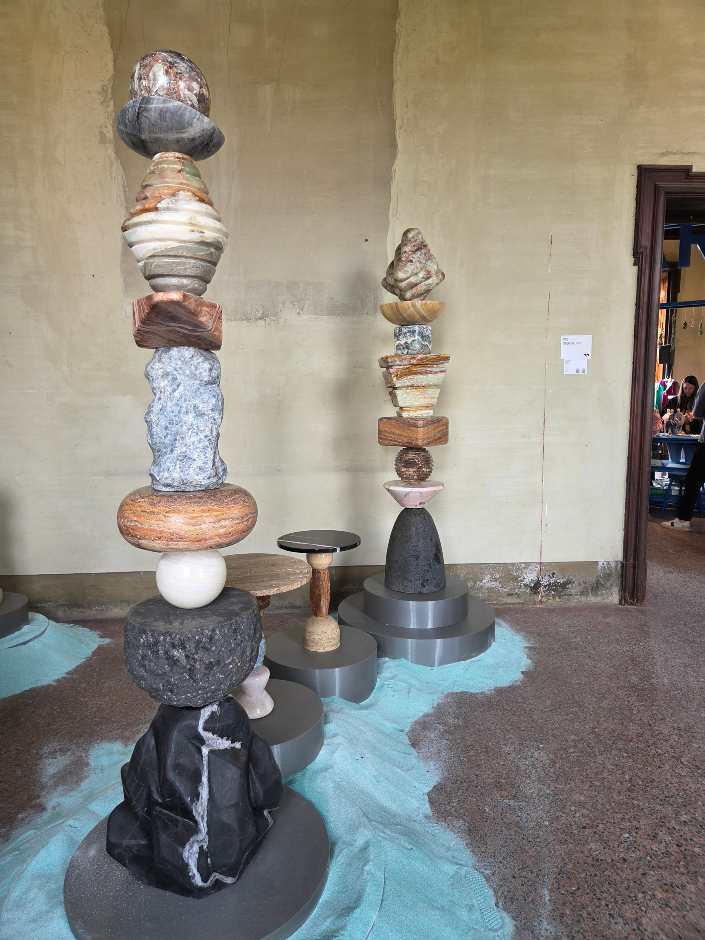
Integrated lighting plays a fundamental role in these pieces. It is not a question of adding decorative lights, but of making the object emit its own light, becoming a luminous presence in the environment. This requires expertise in the integration of the latest generation of LED systems, which must be skilfully concealed within the structure.
The contemporary art market is increasingly influencing design choices. Customers visit international art fairs and want to take home not only paintings and sculptures, but also furniture with the same expressive power. This forces us to maintain a constant dialogue with artists, gallery owners and curators in order to understand the directions in which contemporary art is moving and translate them into design languages.
The sofa revolution: multifunctionality and organic shapes
The sofa is probably undergoing its greatest transformation since the invention of the Chesterfield. It is no longer seen as a simple piece of furniture for sitting on, but has become the centre of contemporary domestic life. In this sense, the piece of furniture must respond to complex and often conflicting needs: socialising and privacy, relaxation and productivity, representation and intimacy.
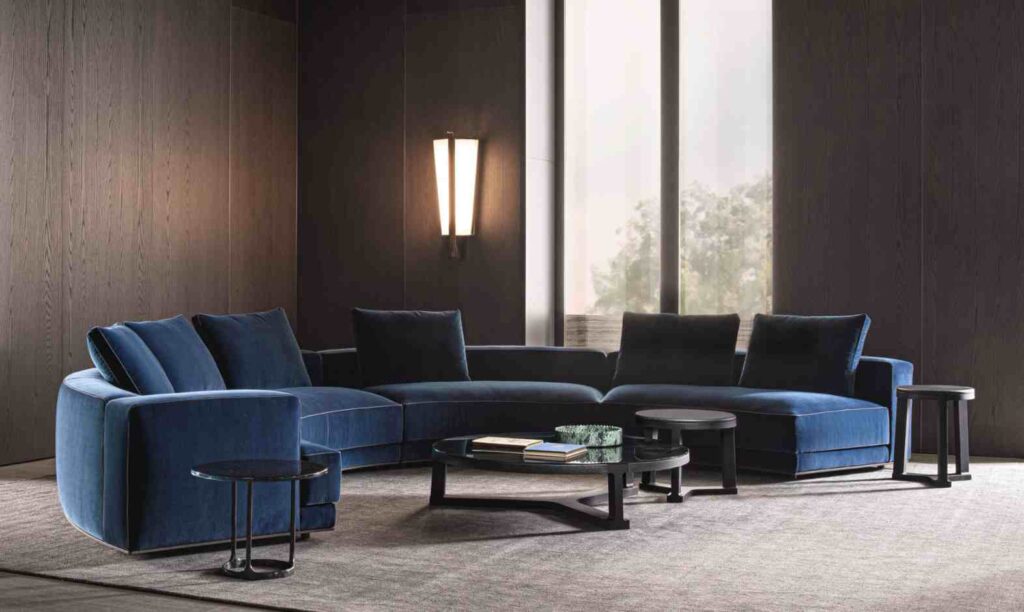
The integration of bookcases and coffee tables into the structure of the sofa reflects changing lifestyles. Customers are increasingly working from home, but they don’t want their homes to look like an office. The design challenge is therefore to create solutions that allow everything to be within easy reach – books, electronic devices, work documents, etc. – while maintaining the elegance and comfort of a piece of living room furniture. The result is modular systems that integrate into the structure of the sofa. These are not added elements, but organic parts of the design. Storage compartments are built into the armrests, sliding tables emerge from the base as if by magic, and bookcases extend behind the backrest, creating a real architectural backdrop.
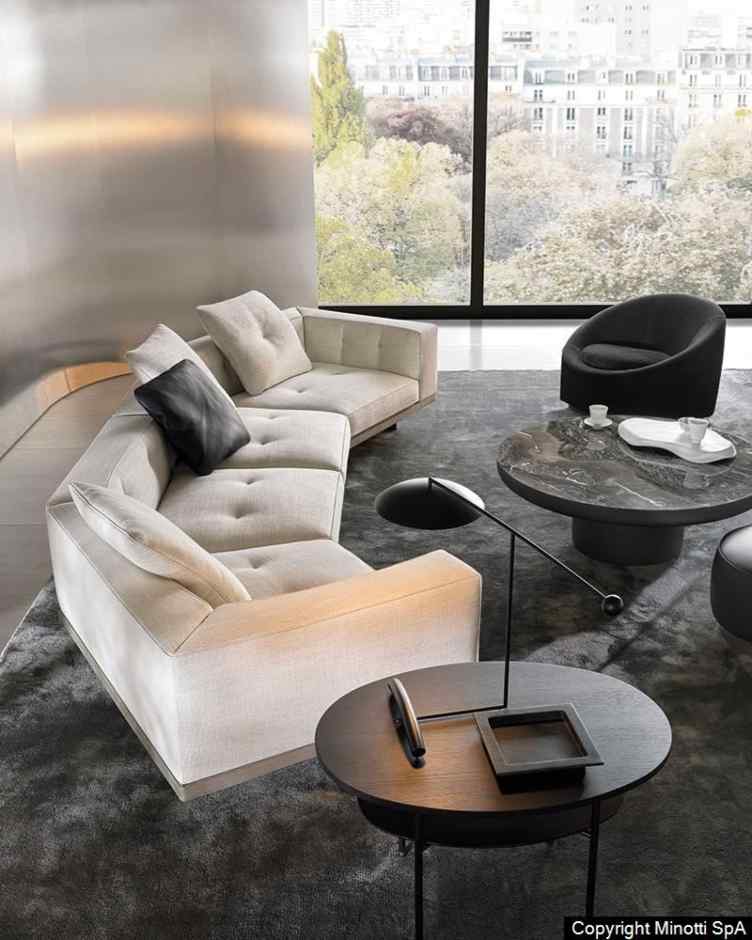
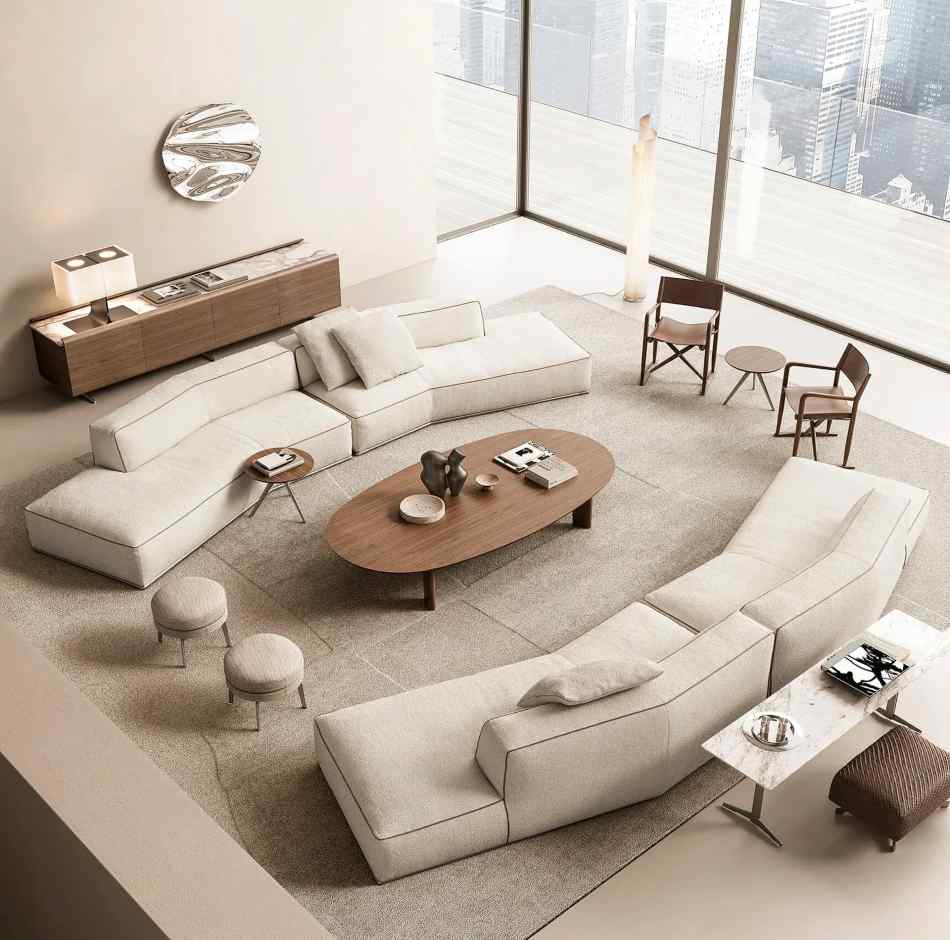
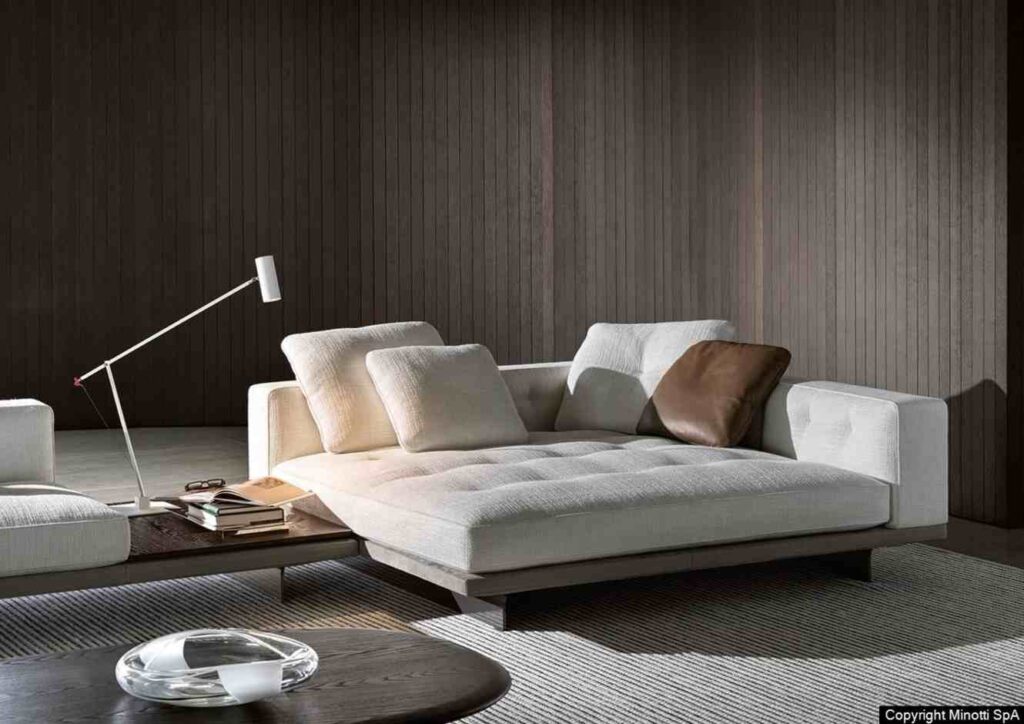
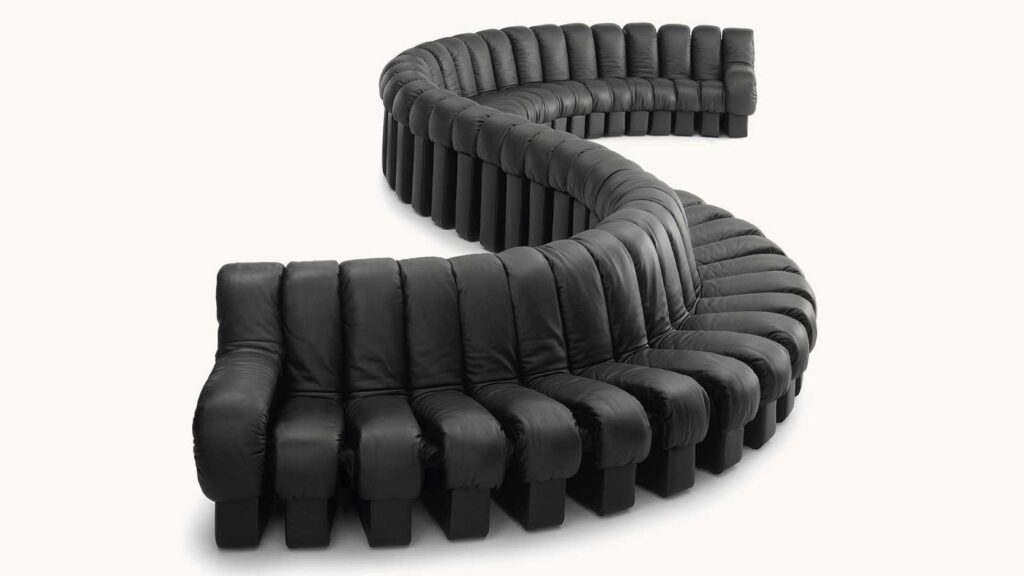
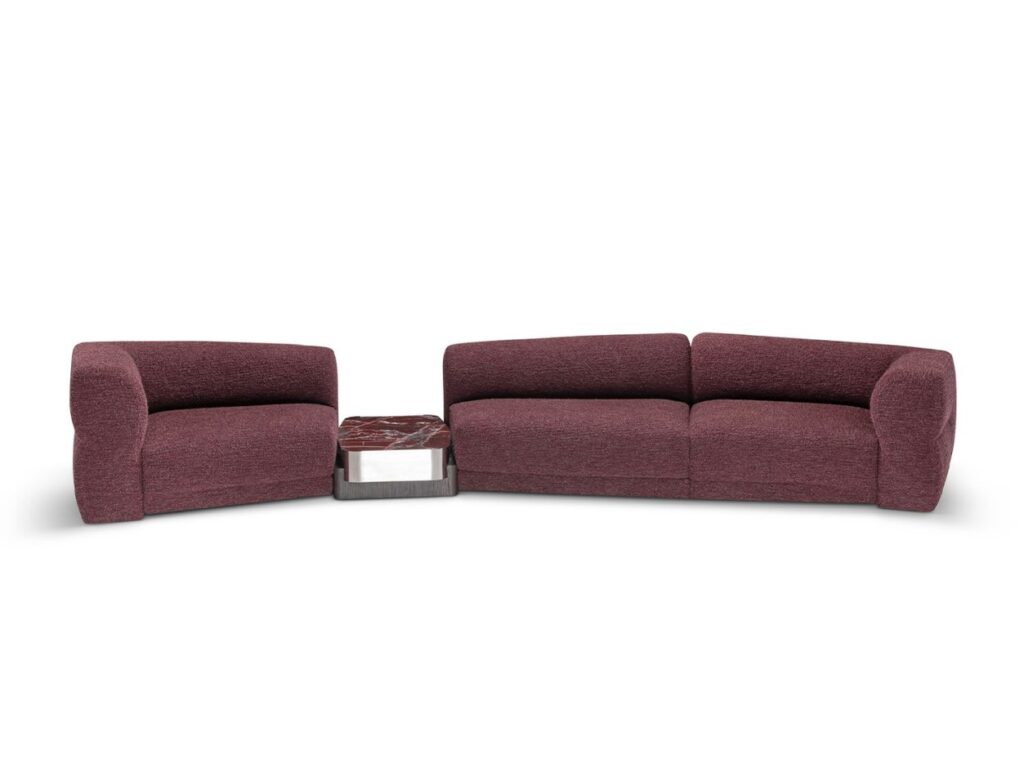
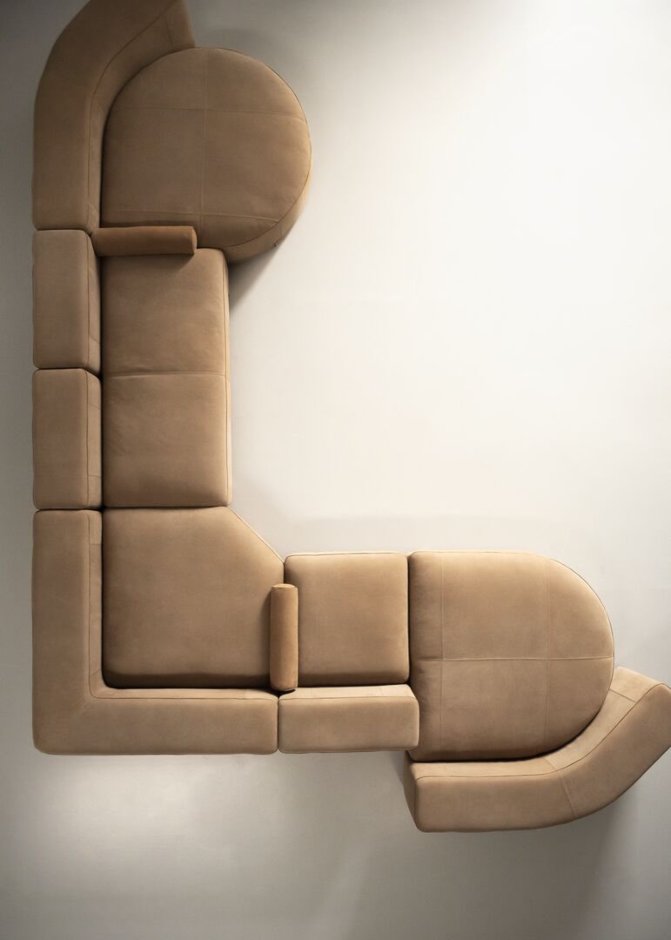
Another trend to note? Curved shapes are emerging strongly on the market, but not as a trivial aesthetic fad. They reflect a search for softness and warmth in an increasingly “angular” and digital world. The curvature is never random: every radius is designed to optimise ergonomic comfort and create visual flows that guide the eye through the space.
The creation of curved sofas requires advanced craftsmanship. Master upholsterers must know how to work leather and fabrics on complex three-dimensional surfaces, avoiding creases and tension. Seams become decorative elements, but must remain invisible when the function requires it.
We are moving towards a more organic aesthetic, without traditional piping. The latter is now disappearing, replaced by sewing techniques that create fluid, continuous surfaces. This requires meticulous precision in the preparation of the pieces and their assembly, because every millimetre of inaccuracy would be immediately visible.
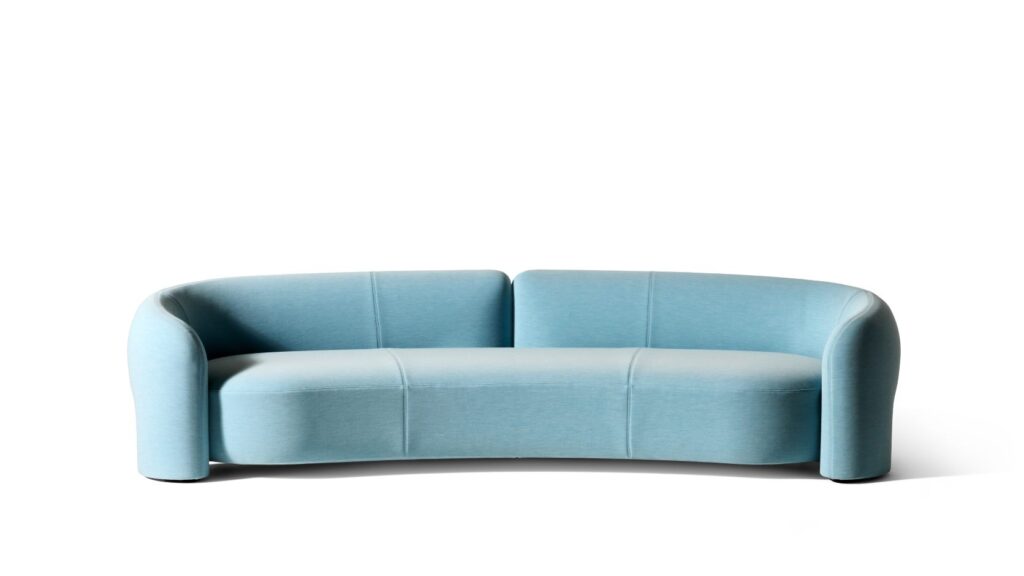
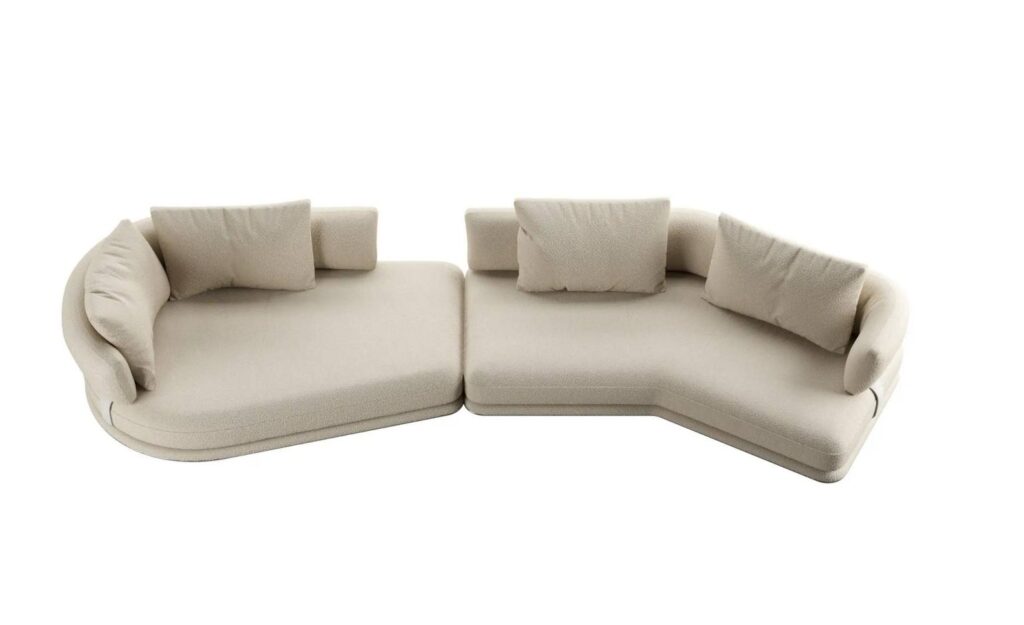
Designer armchairs: the outer shell as a style statement
The armchair of 2025 is an object of pure visual seduction. It is no longer enough for it to be comfortable: it must be a style statement, an object that immediately communicates the cultural and aesthetic level of its owner. The trend of the “outer shell” fully represents this evolution: the structural part becomes decorative, luxurious, almost a jewel.

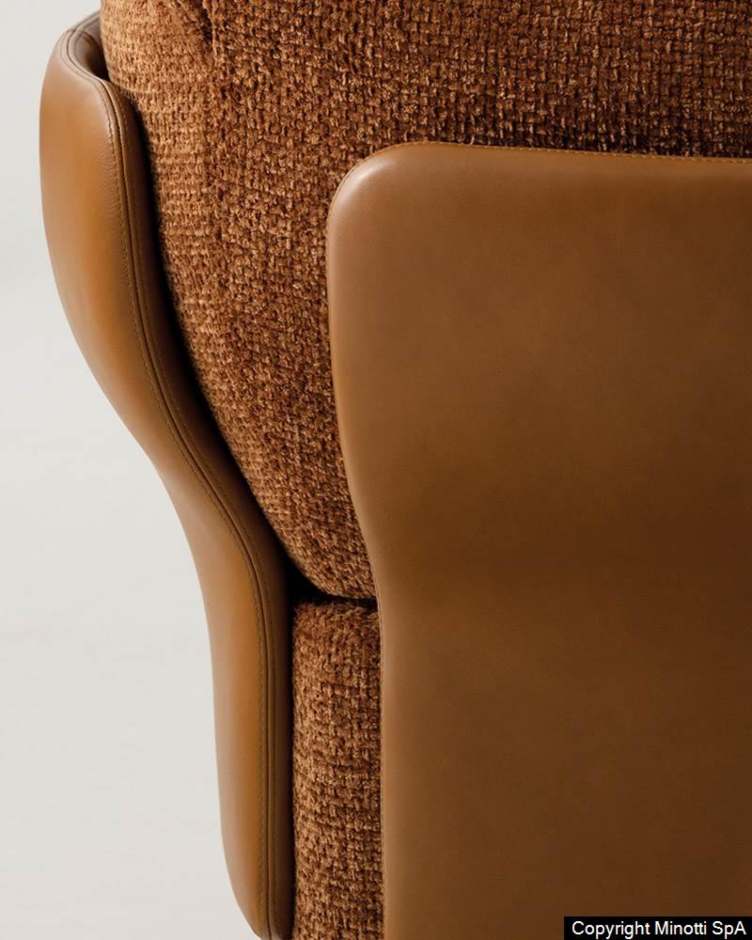
In the workshops, glossy lacquered finishes are being experimented with, transforming each armchair into a mirror of its surroundings. This is not a simple polishing process, but one involving several stages. These include progressive sanding, the application of specific primers, hand colouring and final polishing.
But that’s not all. Burnished or patinated metal creates extraordinary light effects. Each piece is treated individually, using techniques derived from the art of goldsmithing. The patinas are obtained through controlled chemical processes, which create unique shades that are impossible to standardise. This means that each armchair is literally one of a kind.


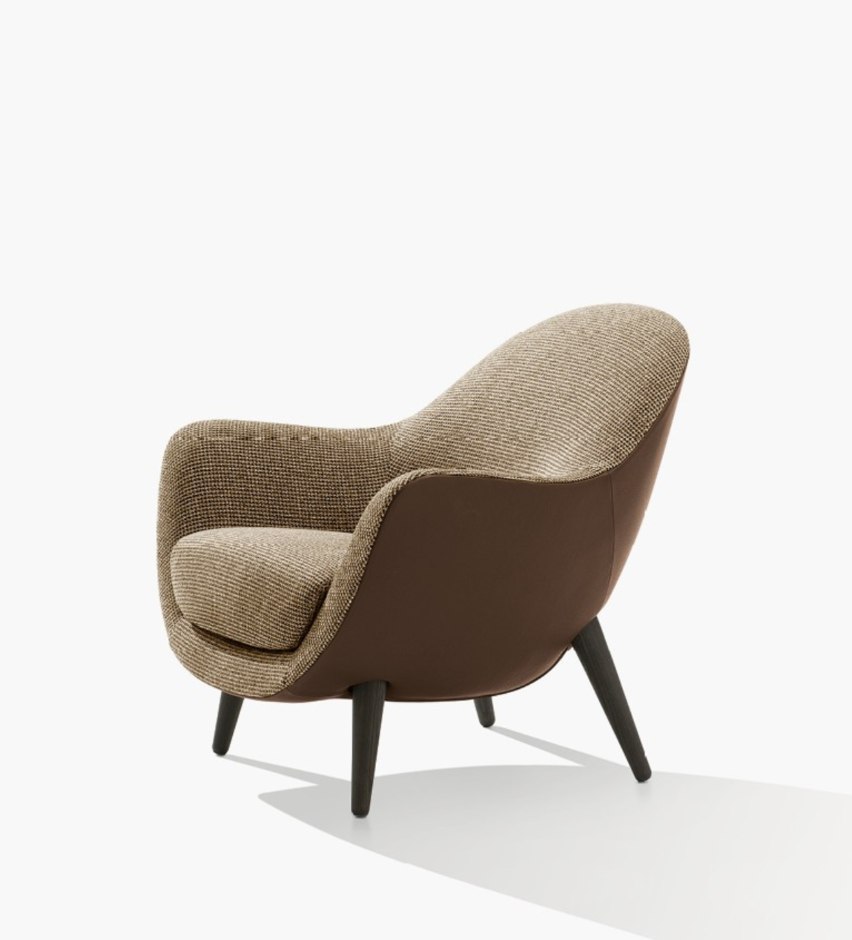

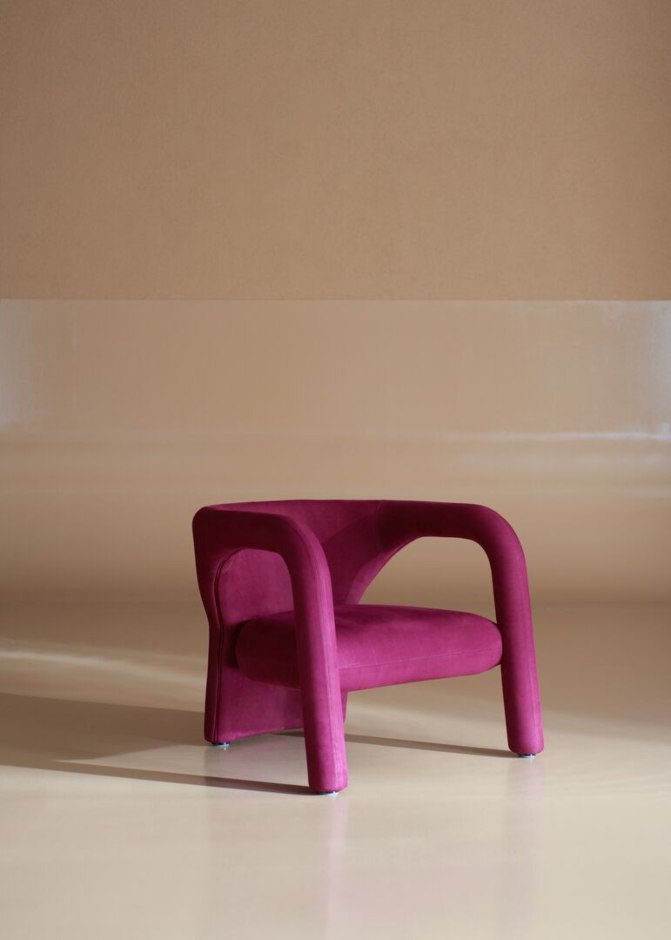
Leather is also on trend, of course of the highest quality. This material requires specific skills in selection and processing. Tanners who adhere to strict environmental standards are involved, without compromising the aesthetic properties. These craftsmen know how to select the best parts of each hide, distributing the most valuable areas where they will be most visible and using those with small natural defects in the hidden parts of the furniture.
The contrast between the structure and the soft padded part of the armchair creates fascinating visual tension. The structure, in particular, becomes a sculptural element, while the padding offers extreme comfort. Such dualism requires careful design: each of the two components must be perfect, because both are in the foreground.
The fully upholstered alternative, on the other hand, responds to the opposite need: the search for total formal purity. Fabrics and leathers envelop the entire structure of the armchair, creating fluid and continuous shapes. The technical difficulty is extremely high: every curve must be perfect, every tension calibrated, every seam invisible. Such total upholstery requires three-dimensional cutting techniques, carried out by craftsmen with years of experience. It is not a question of applying a fabric to a shape, but of modelling it as if it were a plastic material, while maintaining all its original tactile and visual characteristics.
Contemporary chairs: between structure and upholstery
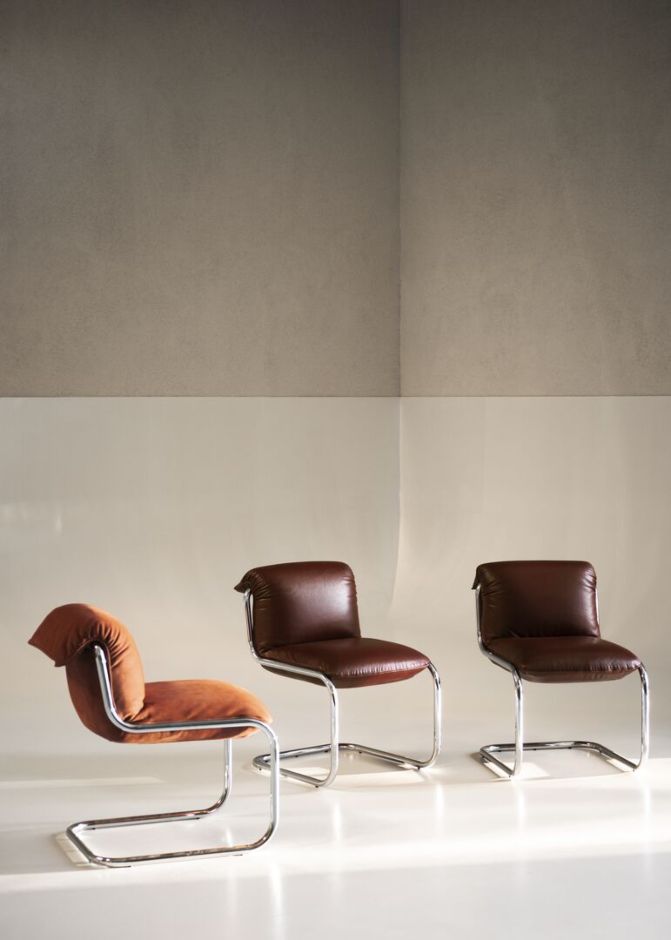
The chair of 2025 oscillates between two extremes. On the one hand, there is the celebration of the metal structure as the main decorative element. On the other hand, there is its complete concealment under luxurious upholstery. In many ways, this is the same idea we described in the previous paragraph for armchairs. Both approaches require exceptional craftsmanship, but of a completely different kind.
Metal structures are no longer mere functional supports, but true sculptural elements. Each tube is bent by hand, using techniques derived from the tradition of wrought iron. The welds are invisible, the surfaces perfectly smooth, and the finishes applied using processes that can take weeks of work.
Satin-finished stainless steel creates soft reflections that blend naturally with contemporary environments. Patinated bronze adds warmth and prestige. Brushed brass brings light and brightness. Here too, each metal requires specific processing and finishing techniques.
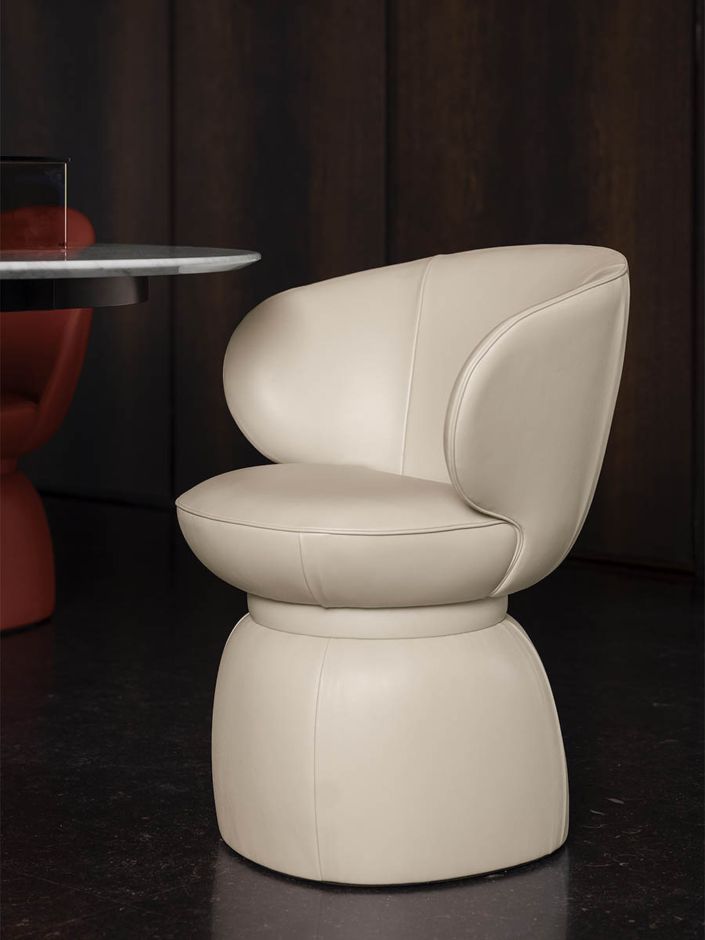
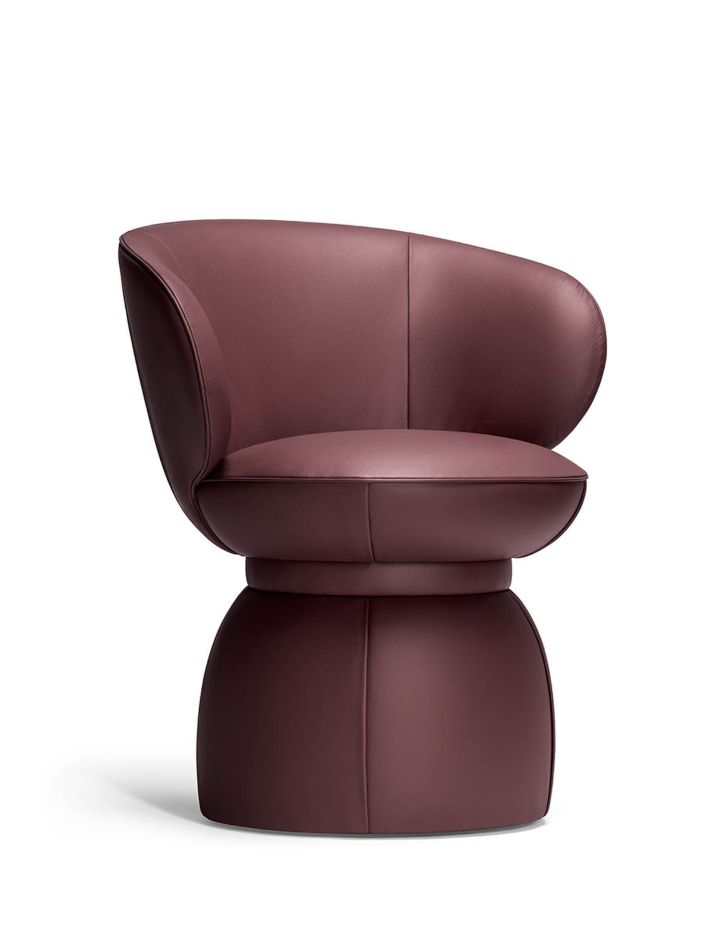
The complete upholstery represents the opposite technical challenge. Hiding the entire structure of the chair from view means that the fabric or leather does all the expressive work. There can be no imperfections, incorrect tensions or rough stitching. Every upholstered chair is an exercise in absolute precision.
In addition, we must mention the latest generation of technical fabrics. These allow effects to be achieved that would be impossible with traditional materials. We are referring, for example, to fibres that change colour with temperature, surfaces that react to touch, and fabrics that incorporate conductive elements for smart functions. The challenge is to introduce these innovations while maintaining traditional elegance.

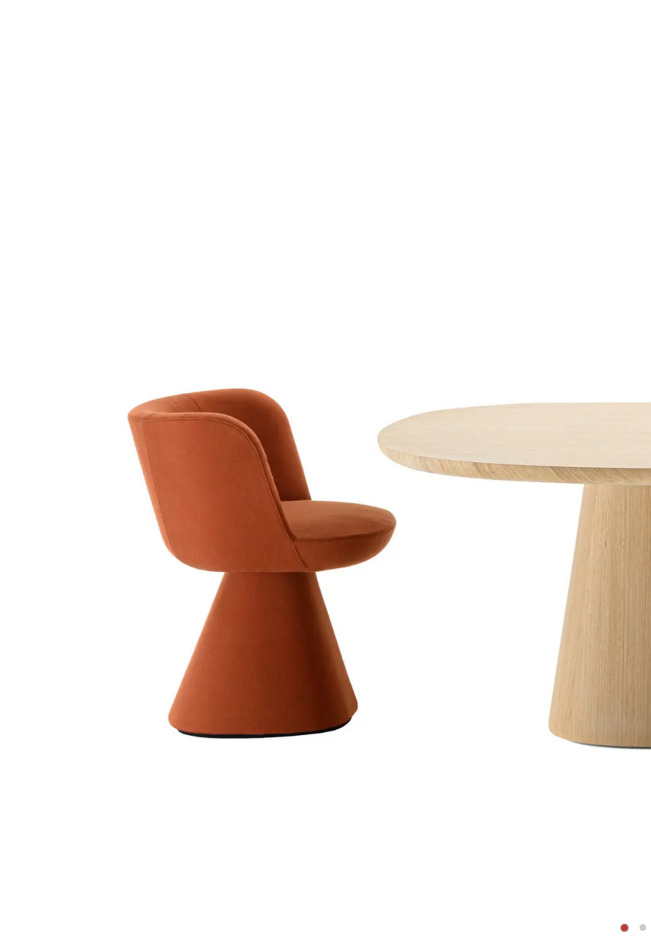

Specific skills are required in the selection of leathers. In fact, each animal has different characteristics, and each part of its skin has specific properties. The best areas should be used where they will be most stressed or most visible.
Today’s kitchens: between technology and a return to basics
The kitchen of 2025 is experiencing a fascinating contradiction. On the one hand, there is a push towards the total integration of technology to the point of its visual disappearance. On the other hand, we are seeing a return to shapes and materials that evoke the most authentic traditions.
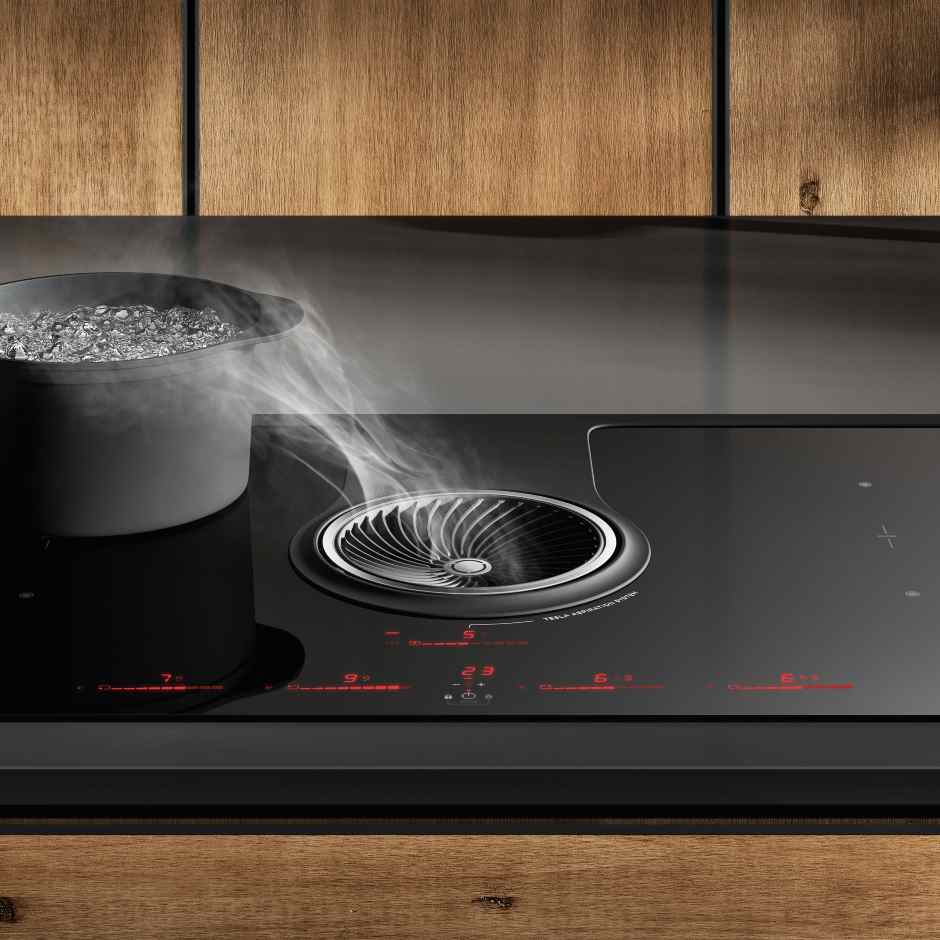
In particular, the integration of hoods into the worktop represents a technical revolution that is becoming increasingly sophisticated. It is not just a question of hiding the hood from view, but of completely rethinking air flows and extraction systems. This requires significant design work, because this type of hood integrated into the worktop requires precise aerodynamic calculations and customised engineering solutions.
From this point of view, invisible perimeter extraction systems are gaining ground, capturing vapours and odours before they spread into the room. The extraction power is distributed over the entire surface of the hob, eliminating the need for traditional hoods without compromising on effectiveness.


Another distinctive trend? Metallic lacquered doors, which create extraordinary light effects, transforming the kitchen into an almost futuristic space. The finishes on offer go beyond the metallics we are used to seeing. The trend is to create iridescent effects, surfaces that change colour depending on the angle of view, finishes that look liquid but retain the strength of traditional lacquer.
The romantic and traditional trend is more current than ever, responding to a deep emotional need. After years of minimalism, customers are looking for kitchens that tell stories, evoke memories and create warm and welcoming atmospheres. This does not necessarily mean nostalgia, but rather a reinterpretation of traditional values in a contemporary key.
Professional kitchens in the home are also very much in vogue, requiring specific skills to integrate industrial equipment into residential contexts. It is not enough to install professional ovens and hobs: power, exhaust systems, and thermal and acoustic insulation must be adapted to make them compatible with domestic life. Every project must strike the perfect balance between extreme functionality and refined aesthetics. After all, more and more customers want the performance of a Michelin-starred restaurant kitchen, but in settings that remain elegant and welcoming, in keeping with the standards of contemporary family life.
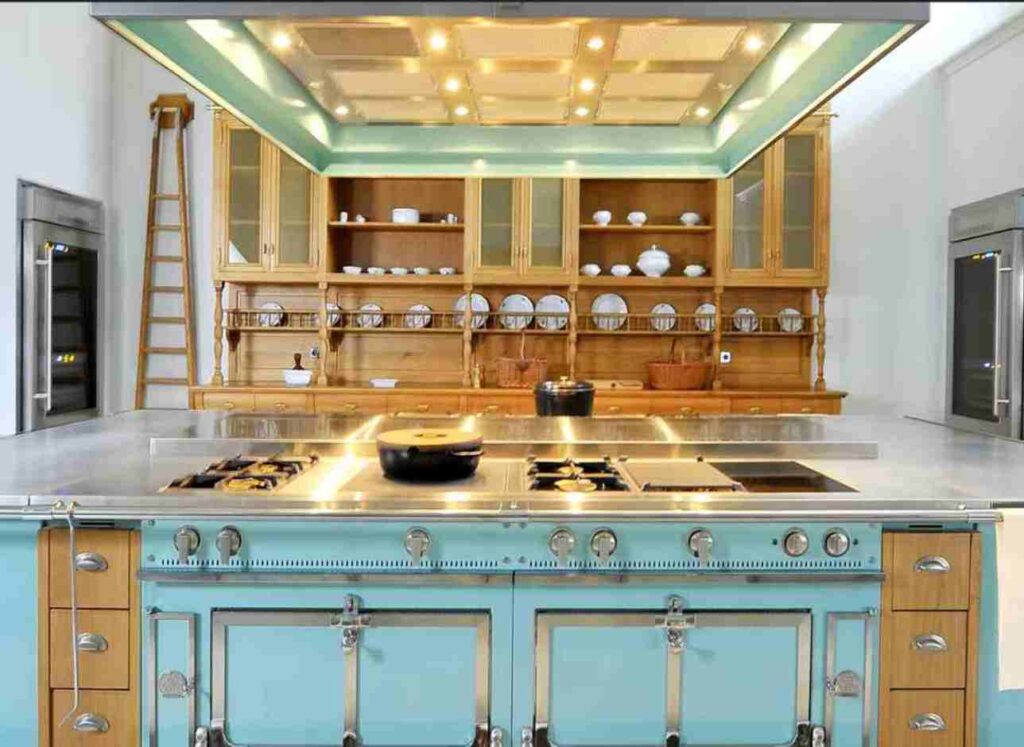
Outdoor living: the garden as the new frontier of luxury
Covid-19 has accelerated a trend that was already underway: the reappropriation of outdoor spaces as natural extensions of the home. These are no longer simple terraces or gardens, but real outdoor rooms that must guarantee the same level of comfort and refinement as the interior.
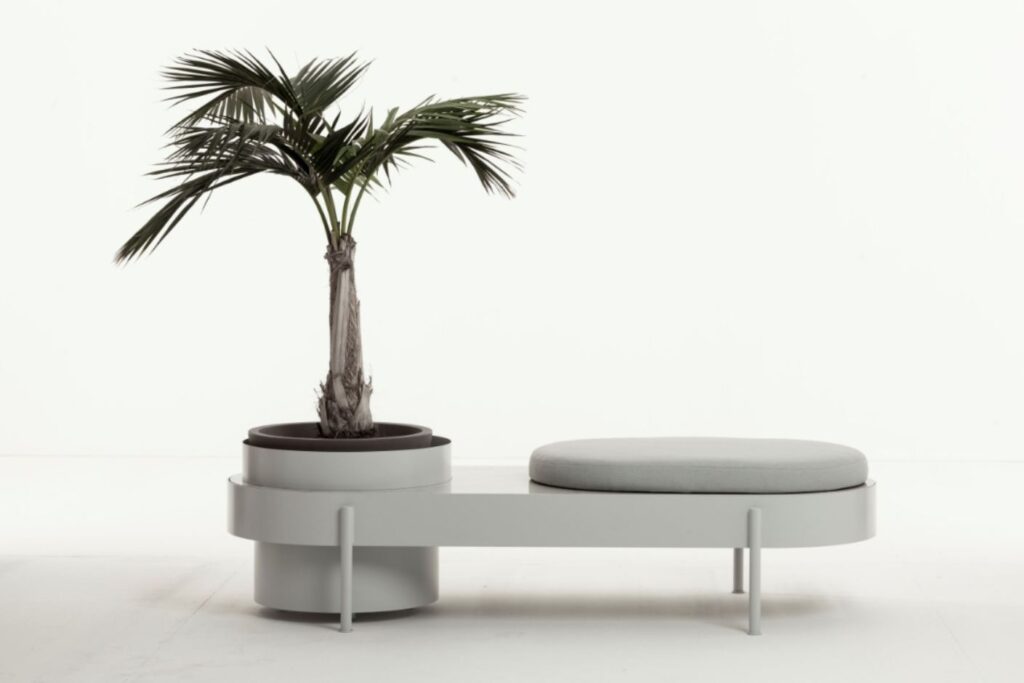
In outdoor projects, the trend is towards the use of materials that can withstand the most extreme weather conditions while maintaining their beauty over time. For example, sustainably sourced teak is treated with natural oils that penetrate deep into the wood. This technique creates lasting protection without altering the natural appearance of the wood.
Technical fabrics for outdoor use have reached levels of sophistication that were unthinkable just a few years ago. Some examples? Fibres that resist UV rays without fading, water-repellent surfaces that maintain the softness of cotton, and padding that dries quickly after rain while maintaining its shape and comfort.
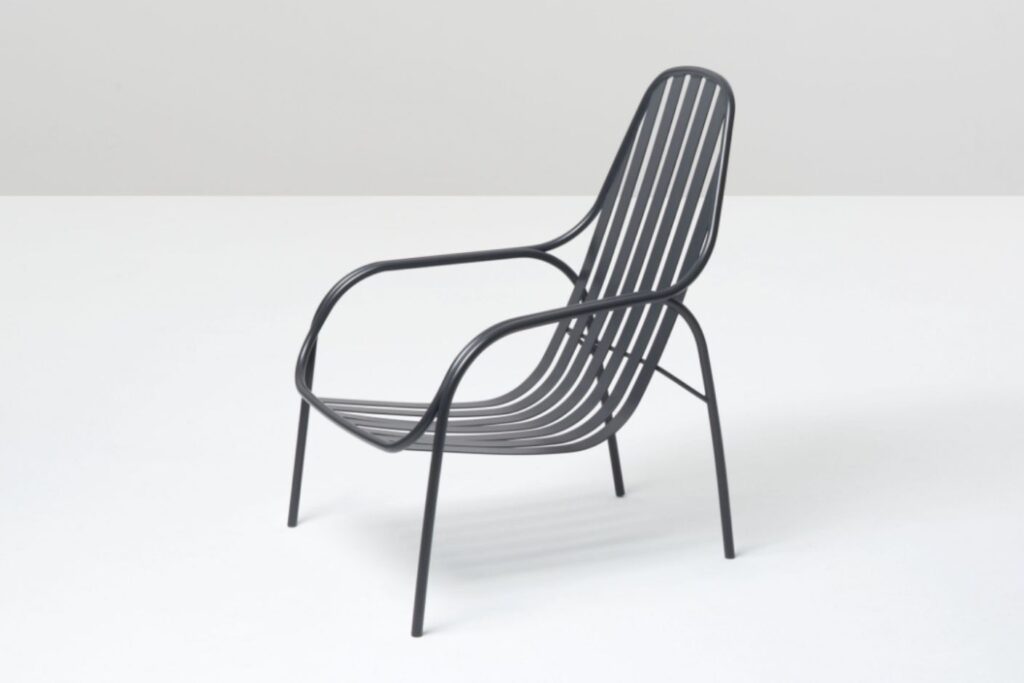

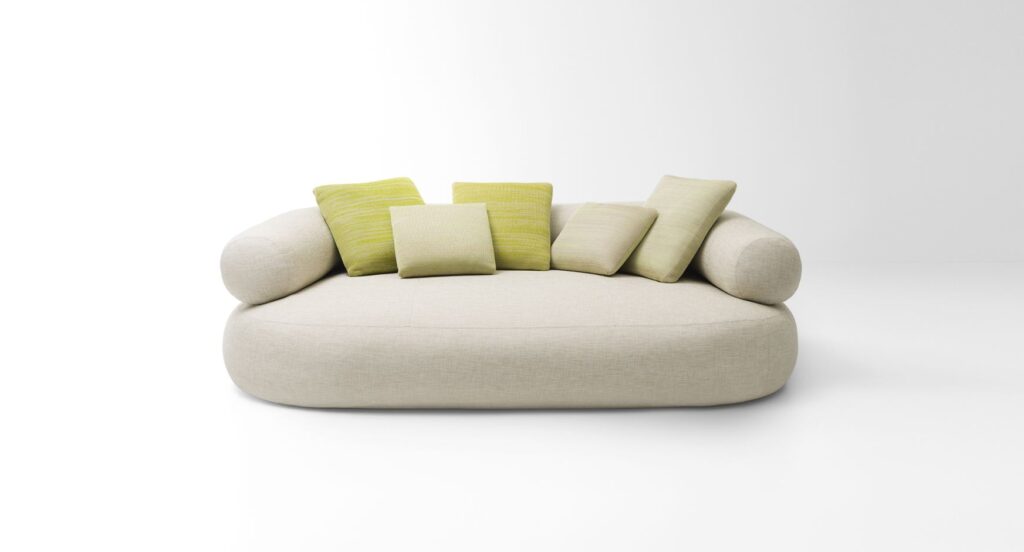
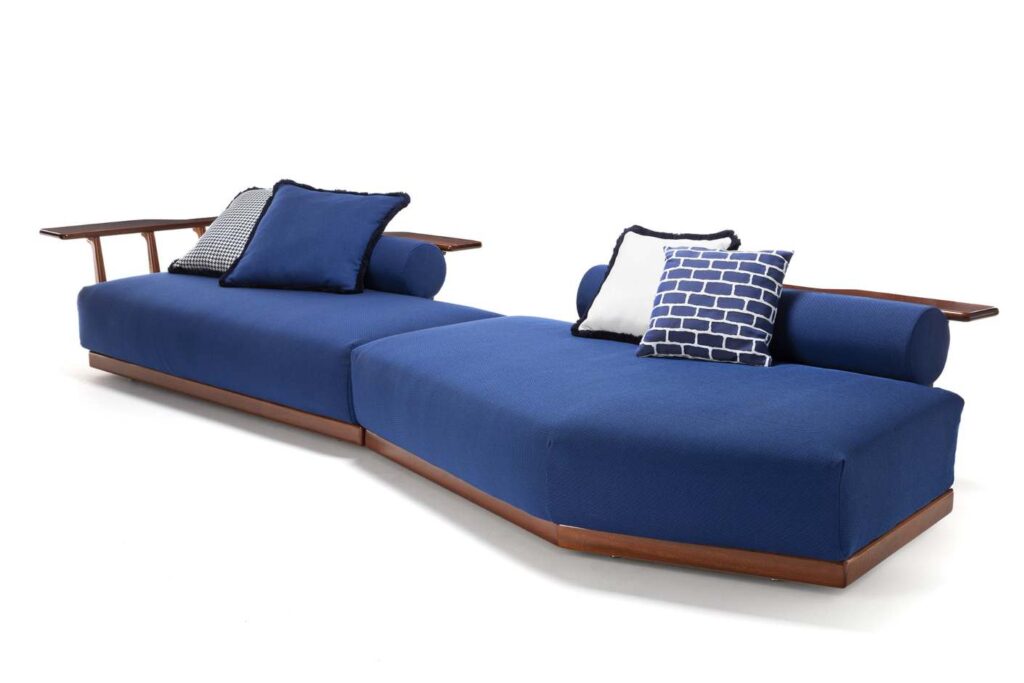
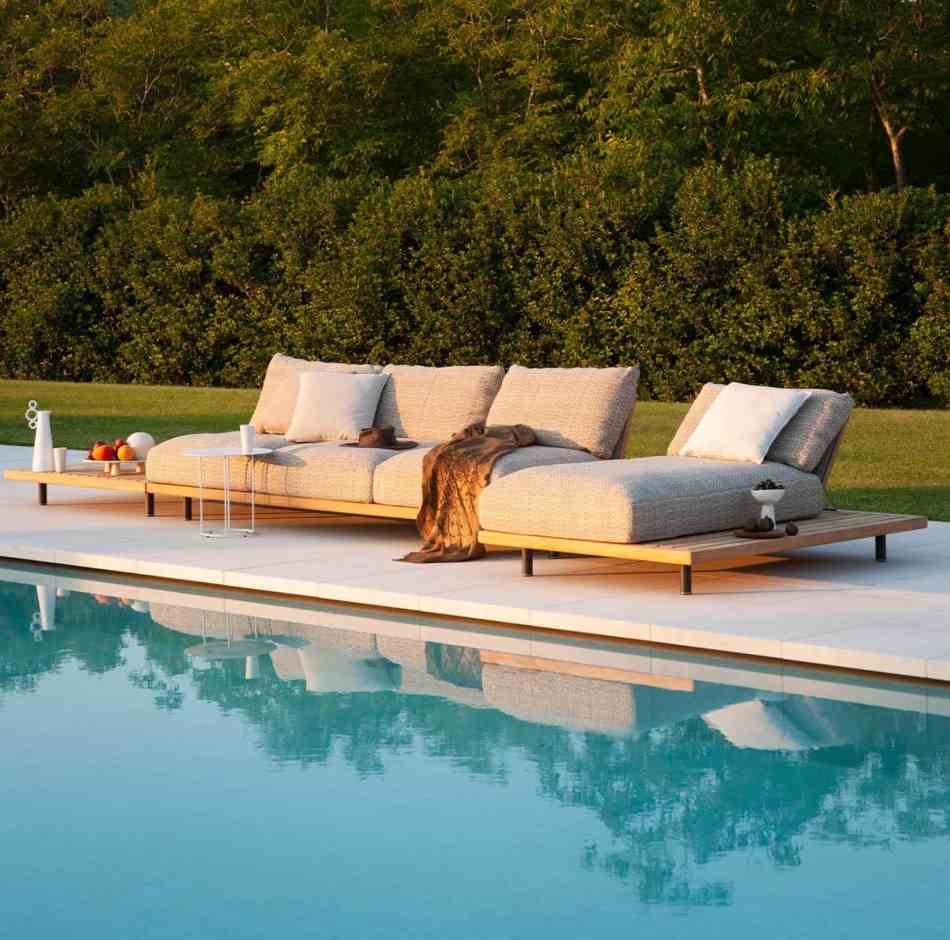
The biggest challenge is to create stylistic continuity between indoors and outdoors without compromising the technical specifications required by each environment. In this sense, each material must be selected for its specific performance. However, the final effect must be one of complete visual harmony.
More generally, the trend for all companies in the sector to expand their outdoor offerings continues unabated. The strategic imperative is now “total lifestyle”: from the kitchen to the walk-in wardrobe to outdoor spaces. Every brand is seeking to conquer new market shares by eroding ground from its competitors. This is particularly true in the most promising emerging markets.
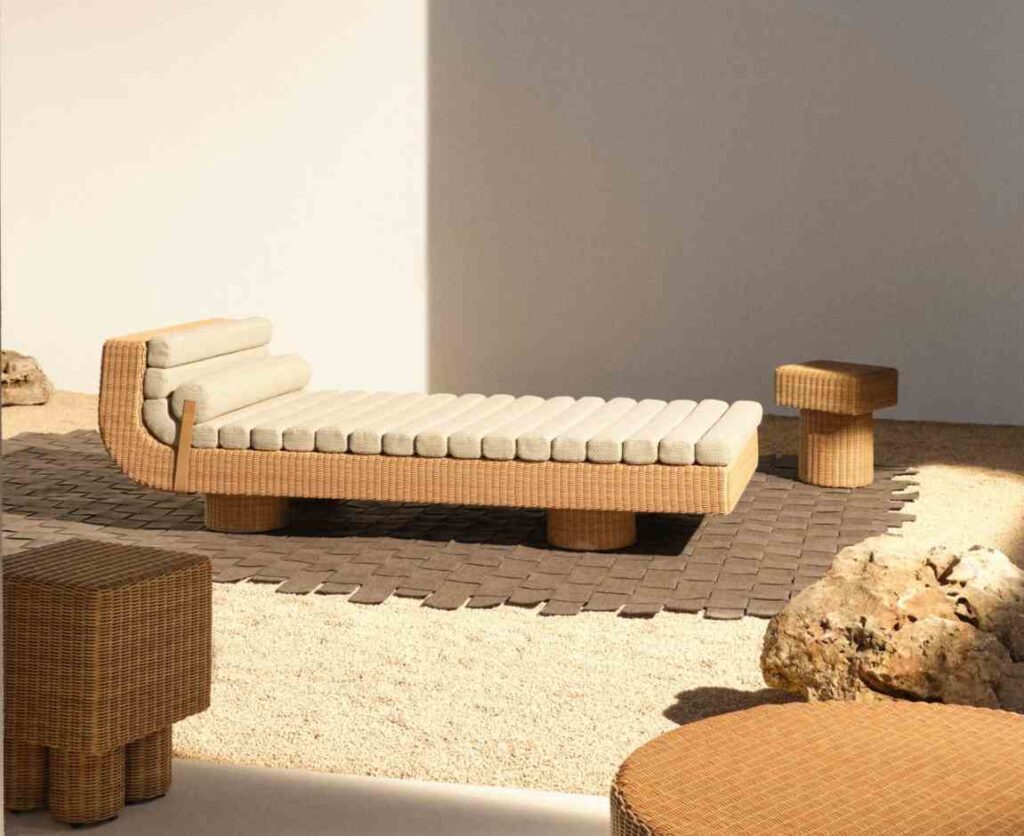
Outdoor furniture is actually the fastest growing segment of all. As we mentioned at the beginning, after the Covid-19 pandemic, customers have realised the importance of having a terrace or outdoor space, however large or small. This new awareness has transformed outdoor furniture from a niche market to a top priority for consumers and, consequently, for companies.
Outdoor kitchens: the art of cooking under the stars
A trend within a trend: outdoor kitchens are enjoying a moment in the spotlight. The reason is the same as the recent success of outdoor furniture in general: the changing needs of post-Covid-19. From this point of view, outdoor kitchens represent the most sophisticated evolution of outdoor living. These are no longer simple barbecues, but real professional kitchens, designed to withstand the elements and offer Michelin-starred performance in the garden.
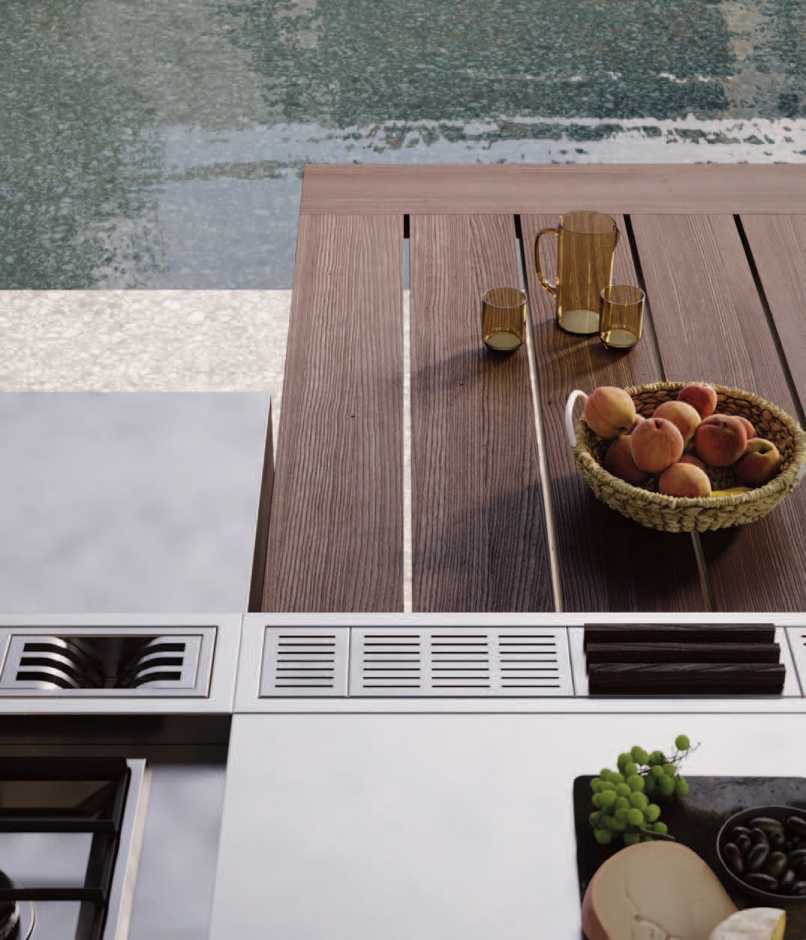
What are the guidelines for this trend? Every element must be specifically designed for outdoor use. For example, marine-grade stainless steel worktops are resistant to salt corrosion, treated teak structures maintain dimensional stability even in extreme temperature changes, and electrical systems are protected to marine standards.
The integration of appliances requires specific expertise in adapting professional equipment for outdoor use. Ovens, hobs, refrigerators, dishwashers: all must be modified to ensure optimal performance. And this even in adverse weather conditions.
Specifically, retractable covering systems protect the cooking area without compromising the feeling of openness to the outside. To achieve this, technical materials are used that filter UV rays while maintaining transparency, and motorised systems that activate automatically in case of bad weather.
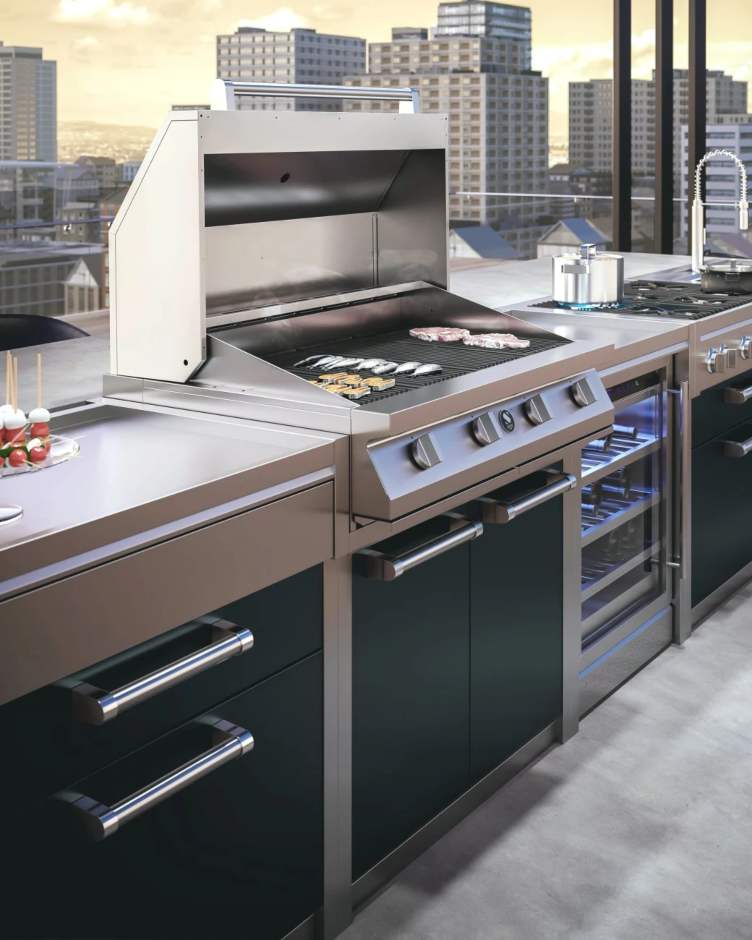
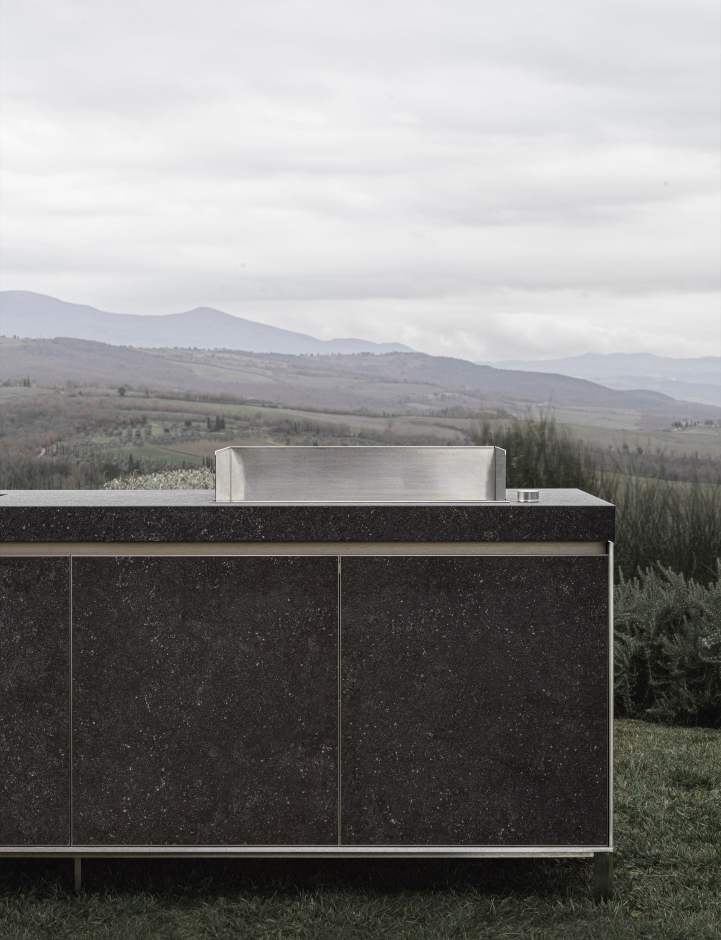
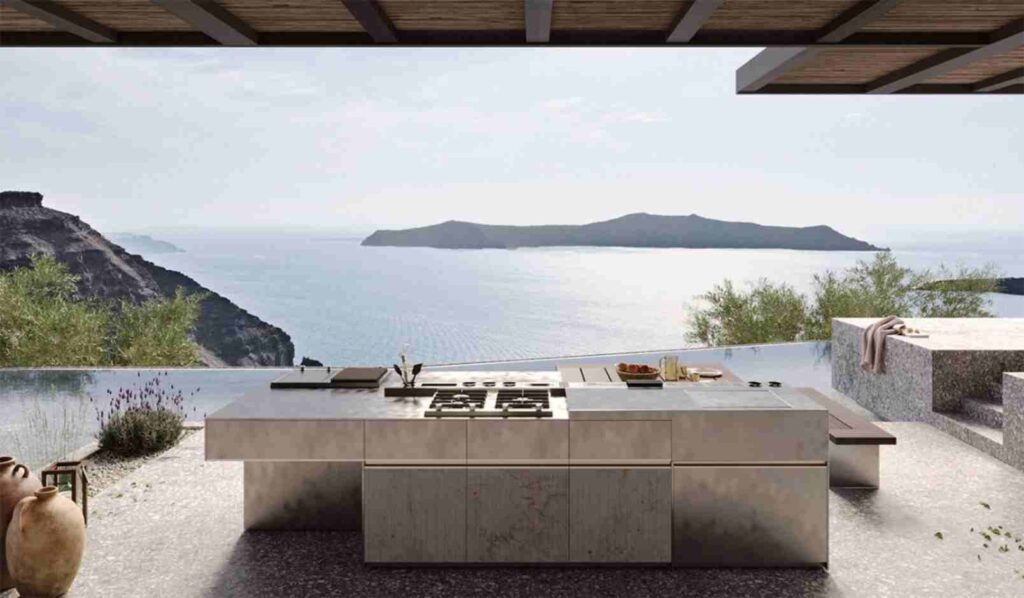
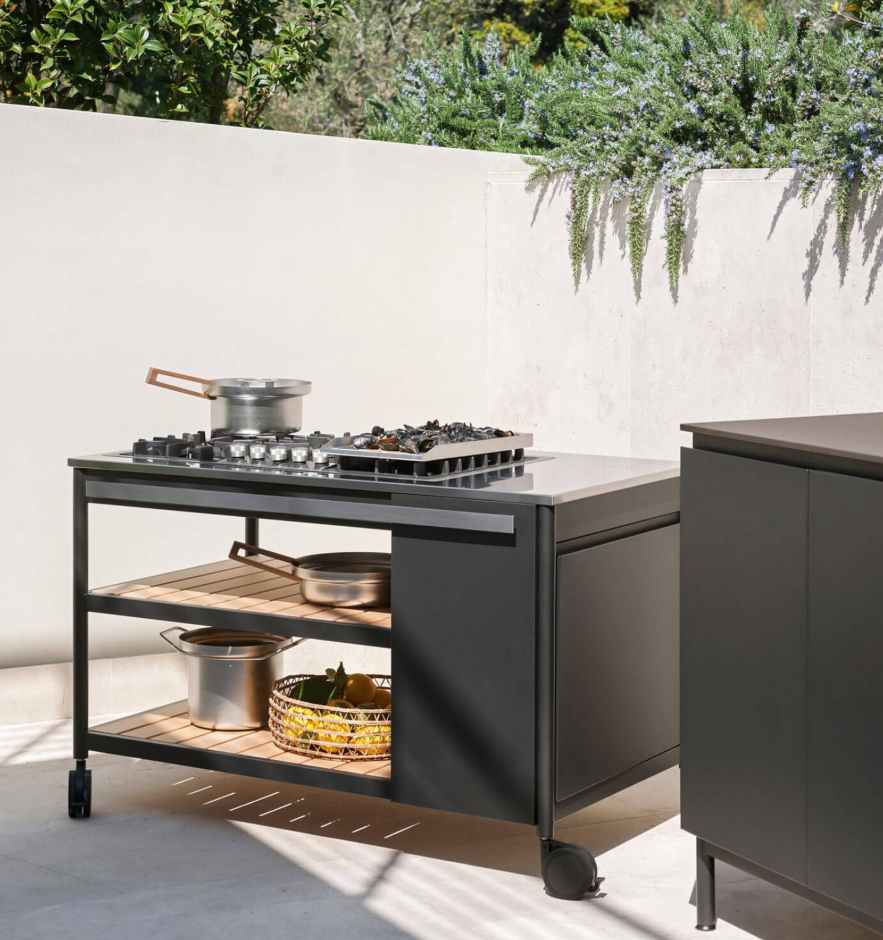
In addition, functional lighting must ensure perfect visibility for food preparation. At the same time, mood lighting creates the right atmosphere for evening conviviality. Each area has its own specific requirements: cool, powerful light for cutting and preparation, warm, diffused light for eating and socialising.
Food storage systems must also adapt to outdoor temperatures. Outdoor refrigerators and freezers have specific insulation and optimised energy consumption for the most demanding conditions of use.
Conclusion: the future lies in craftsmanship that embraces innovation
From this journey through the trends that will define interior design in 2025, one fundamental truth emerges: the future of our industry will be neither completely technological nor nostalgically traditional. Instead, it will be a perfect synthesis of innovation and craftsmanship.
Each trend we have analysed requires specialist skills that go beyond normal design practice. A few examples? Sustainability requires in-depth knowledge of new materials and their production processes. Sculptural furnishings require artistic sensibility combined with advanced engineering skills. Integrated smart systems require technological expertise and an understanding of digital ecosystems. But all this is of little use without the craftsmanship that transforms an idea into a real, tangible, exciting object.
Consequently, the challenge for all of us in the industry is to build collaborative networks that integrate these different skills. Architects, designers, artisans, technicians and manufacturers must work together from the earliest stages of design. The goal is to create a collaborative ecosystem to meet the increasingly sophisticated demands of contemporary customers.
The luxury market will increasingly reward uniqueness, customisation and the story that each piece tells. As we have seen, the most demanding customers are not simply looking for furniture, but for elements of identity. They want furnishings that will define their lifestyle for decades. This evolution in expectations represents an extraordinary opportunity for all professionals who are able to rise above mass-produced products and move towards bespoke creations.
2025 will also be the year when quality returns to centre stage. Not quality as an abstract concept, but as the tangible result of excellent skills, selected materials and meticulous processes. Above all, quality that comes from genuine passion. The passion that transforms every project into a unique work of art.
In short, the future will smile on those who know how to combine tradition and innovation, creating living spaces that not only function perfectly but also tell unique stories. Stories that will last for years to come.
Il Piccolo: the ideal partner for your interior design studio
If this guide has provided you with valuable information for understanding the new dynamics of the market, now is the time to transform this knowledge into concrete projects. More than that: into projects that will satisfy even the most demanding customers. And we at Il Piccolo can help you achieve this goal.
Working with us means accessing many benefits. For example, we can guarantee you over 50 years of experience, constant dialogue involving the company’s owners, and delivery times that meet even the tightest deadlines. What’s more, we guarantee complete customisation, allowing you to realise even the most daring visions, as well as worldwide transport and assembly by qualified in-house staff. Finally, we guarantee the craftsmanship that transforms each of your projects into a unique work of art.
Our workshops and showrooms are open for dedicated visits. You can evaluate the excellence of our materials in person. You can also meet the master craftsmen who will bring your ideas to life. And you can see first-hand the process that transforms your designs into furniture that will last for generations.
This total transparency guarantees you the security of offering your customers only the best.
In particular, we offer an exclusive design consultancy service for architectural firms: from the creation of prototypes for more effective presentations to the development of technical solutions for the most complex requests, right through to support in the management of international projects. The result? More satisfied customers, 100% tailor-made projects and a professional reputation that is consolidated over time.
Contact us to discuss your next project:
Il Piccolo | Interior Design
Corso di Porta Nuova, 34
20121 Milan
Email: design@ilpiccolo.com
Telephone: +39 02 86 68 38
Telephone: +39 335 73 21 723
